Best telescopes for deep space 2025: View the universe in breathtaking detail
Gaze deeper into the night sky with the best deep space telescopes, perfect for stunning views of the Pinwheel and Waterfall Galaxies and other cosmic wonders.
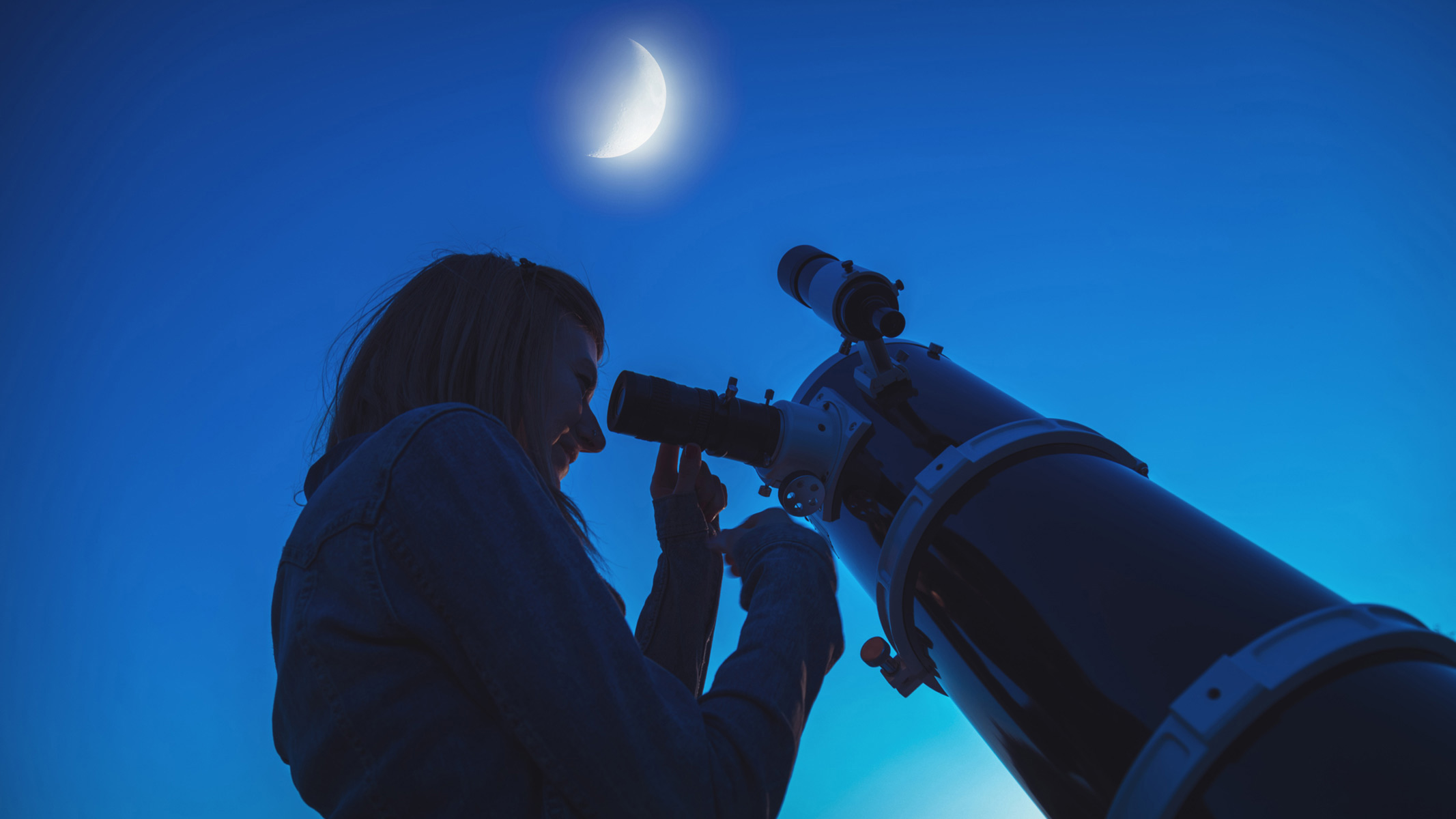
Are you looking for a telescope to survey the depths of the night sky? We have got you covered with our round up of the best deep space telescopes. Now is a great time to invest in a deep space telescope and go galaxy watching, too. For example, this April 18 you can follow the Big Dipper for fantastic views of the Pinwheel Galaxy (M101) and the Whirlpool Galaxy (M51).
The deep space spectacles don't end there, though. Throughout April you can home in on globular star cluster NGC 5272 / Messier 3 (M3), which isn't just spectacular to behold, it's downright historic, because it was the first Messier object to be discovered by Charles Messier. And if you're in the southern hemisphere, you can use the best deep space telescopes to locate massive globular star cluster Omega Centauri.
Below, we explain just what each of these deep space telescopes has to offer and who it is best suited to, to make sure you buy the right telescope. Deep space telescopes tend to be more expensive than entry-level scopes, but we've also included a budget option or two. There are still telescope deals to be had; we have listed the prices of these models below to help you hunt down a bargain. Or, if you are on a strictly limited budget, take a look at the best budget telescopes.
The quick list
We've rounded up our top picks of the best telescopes for deep space, summarized their main features, who they're suited to, and where you can buy them. It's important you buy the right telescope for you, so if you want to know more about a particular model, click on the 'read more below' option, and you'll be taken to a more in-depth summary.
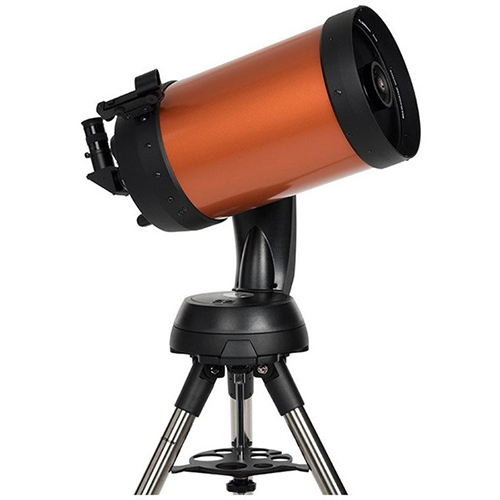
Best overall
The Celestron NexStar 8SE is no small investment, but this feels like a telescope that is really built to last, with edge-to-edge sharpness across the field of view and a superb design.
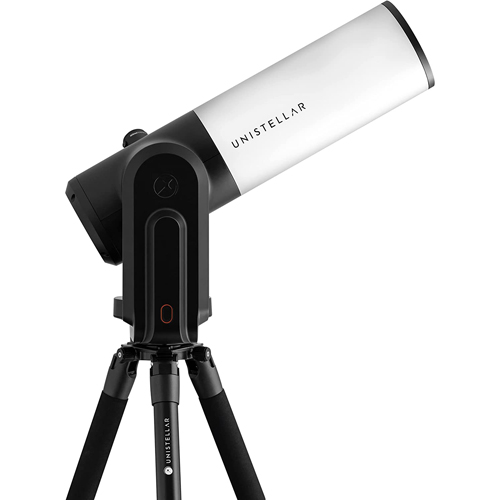
Best smart telescope
The eVscope 2 is an unusual type of smart telescope that makes it easy and convenient to navigate the night sky even without any prior astronomy experience.
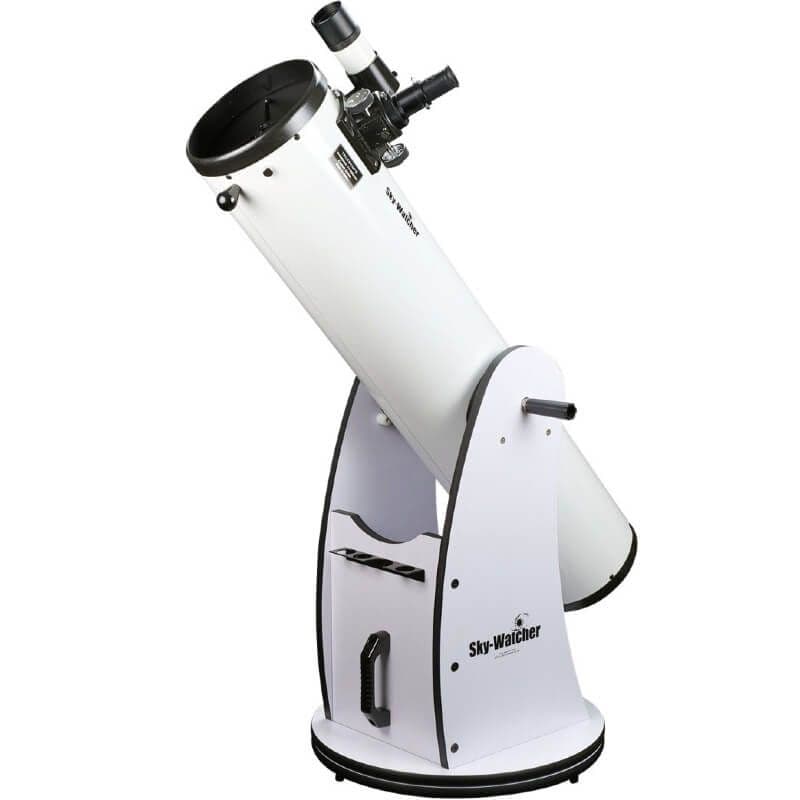
Best value
For those looking for quality deep-space viewing on a budget, this offers fantastic value for money with brilliant optics and one of the best aperture-to-price ratios on the market.
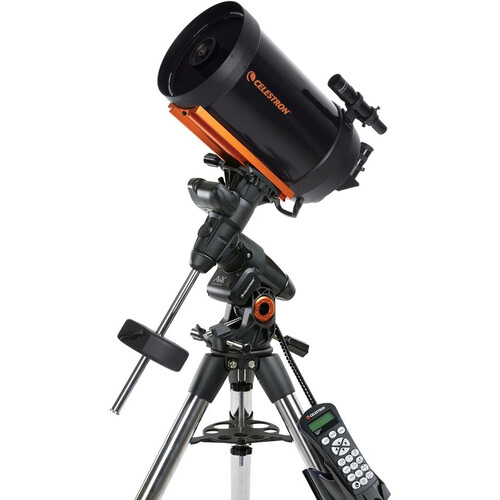
Best premium telescope
If you're a serious amateur astronomer who wants to stargaze and test out your astrophotography skills, then the Celestron Advanced VX 8 Edge HD is a great premium option.

Best for serious observers
If you're a seasoned sky-watcher looking to upgrade your kit, the Sky-Watcher Flextube comes equipped with a 16-inch aperture to give users an astonishing view of deep space.
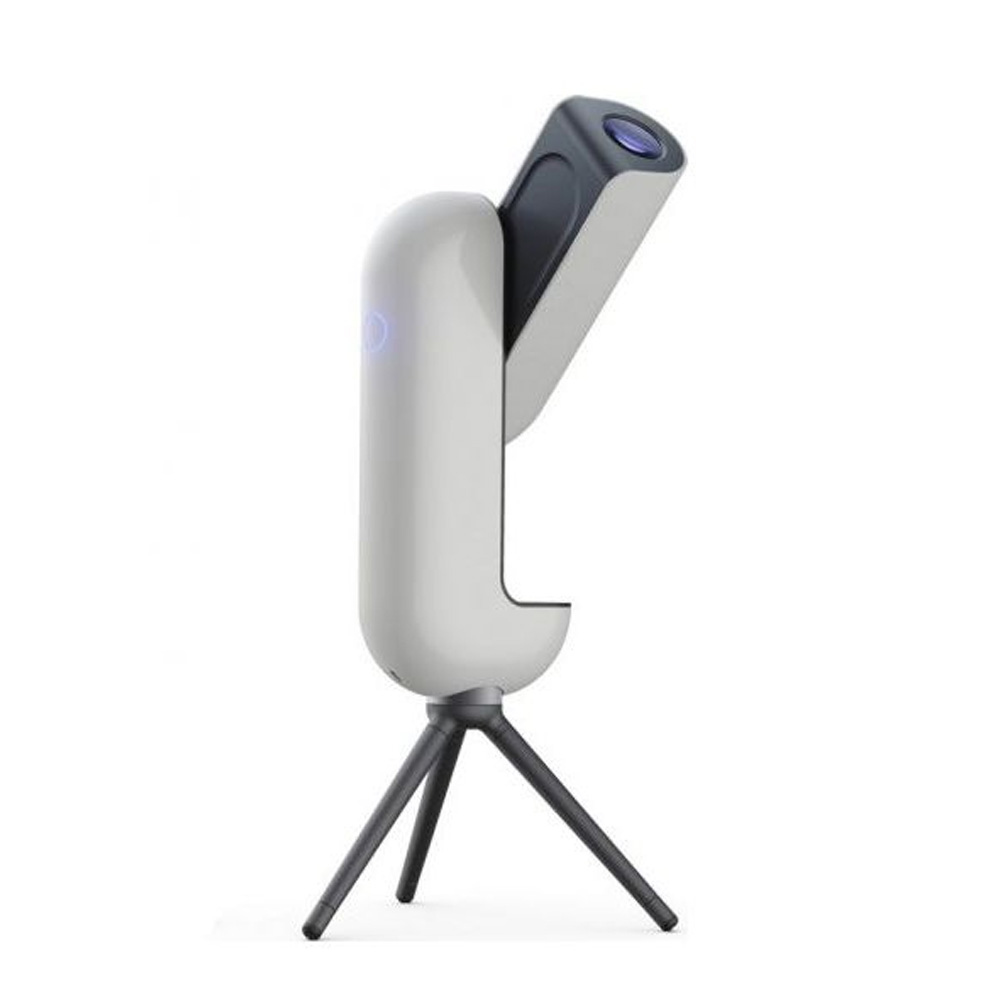
Best compact smart telescope
For tech-savvy sky-watchers looking for a modern way to view the night sky, this telescope is a very nifty bit of kit that can capture stunning images of deep sky objects.
Load the next 3 products ↴
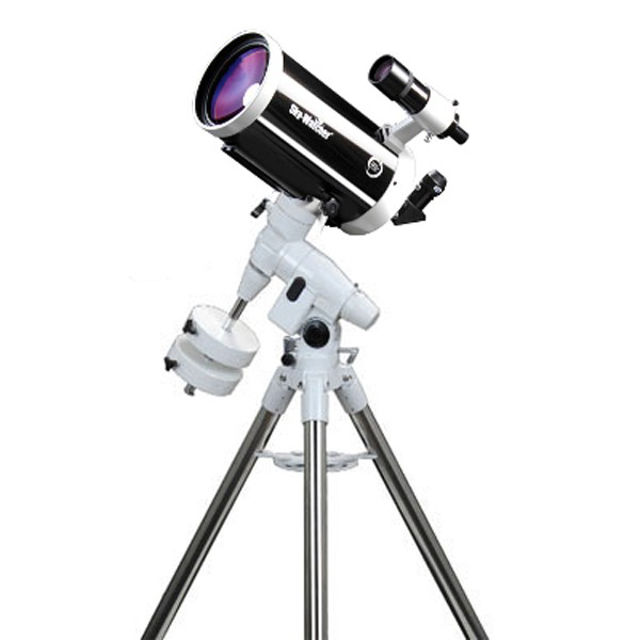
Best for versatility
While probably best for planetary and lunar observations, this scope acts as a great all-rounder. At less than $1000, it's a reasonable price for some top-quality stargazing equipment.
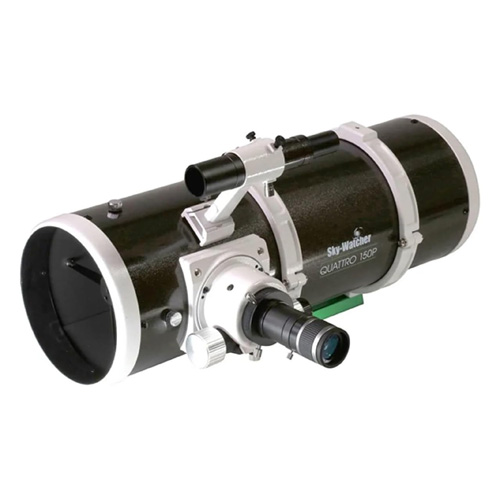
Best for traditional astrophotography
Want to capture stunning images of star clusters, nebulae and more? The Sky-Watcher Quattro 150P is excellent for deep space photography, and despite its budget price it doesn't skimp on optical quality.
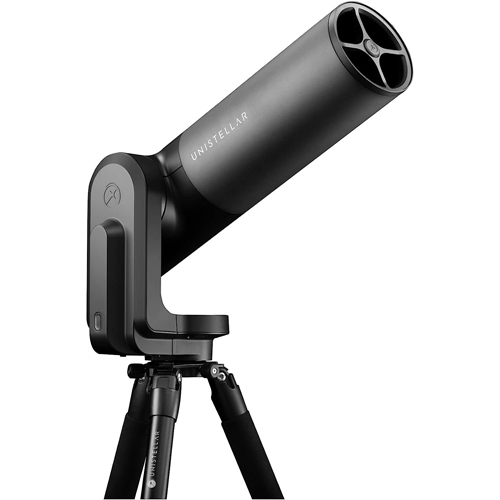
Best for simple setup
A powerful smart telescope, the Unistellar eQuinox is a great choice for beginners and pros alike thanks to its very easy setup. You won't need any prior knowledge to hit the ground running here.
The best telescopes for deep space we recommend in 2025
Why you can trust Space.com
Best overall
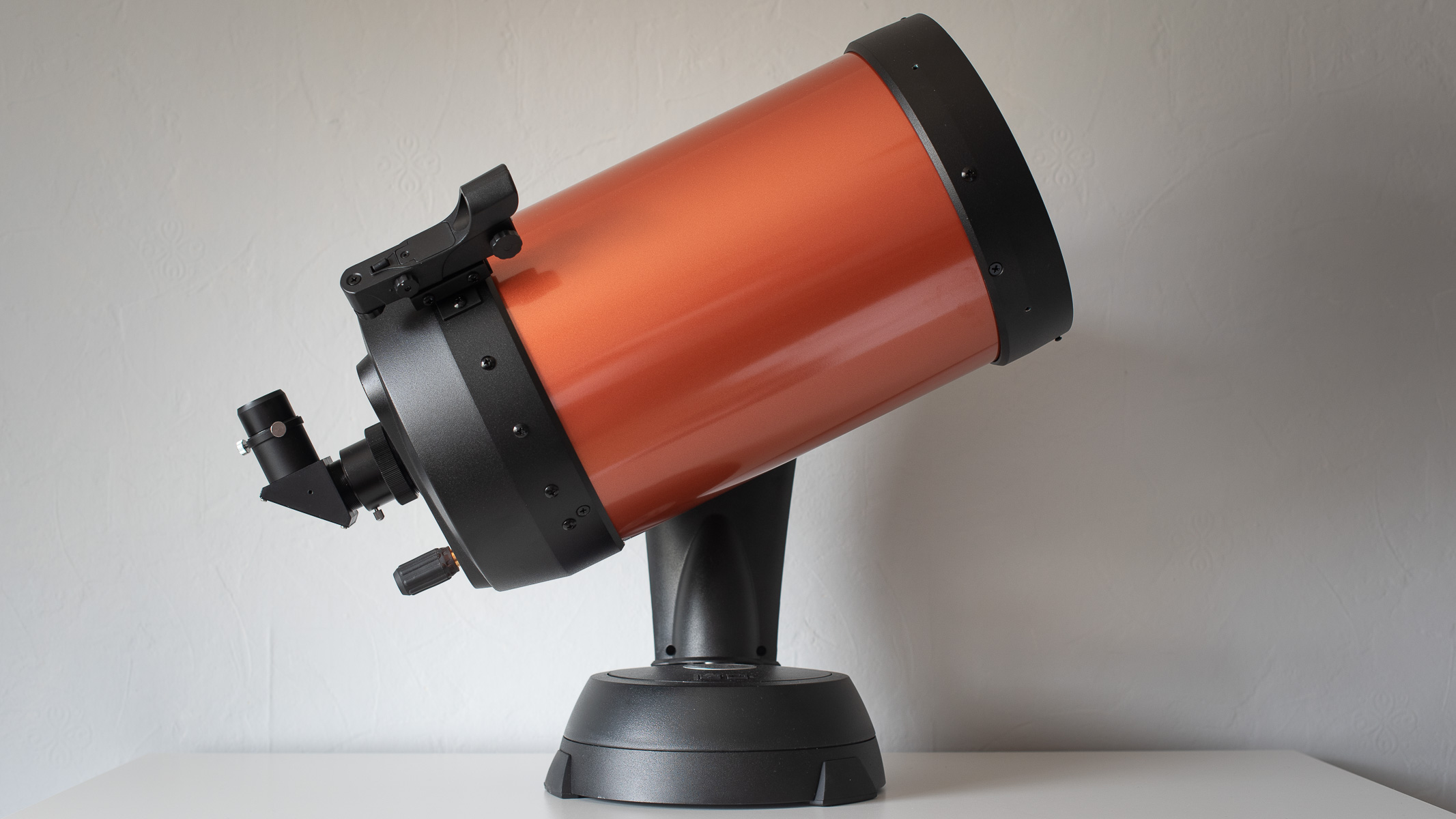
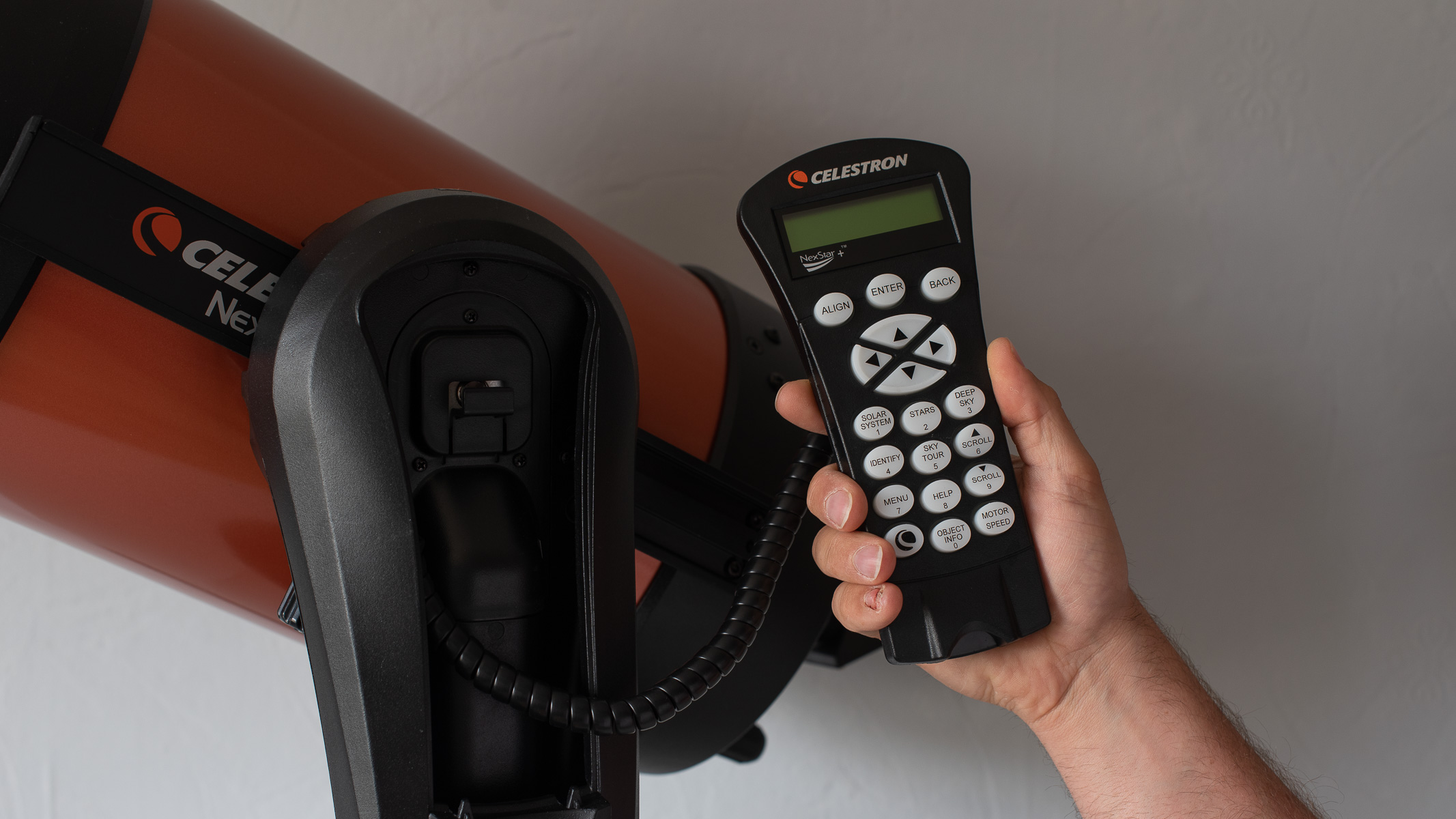
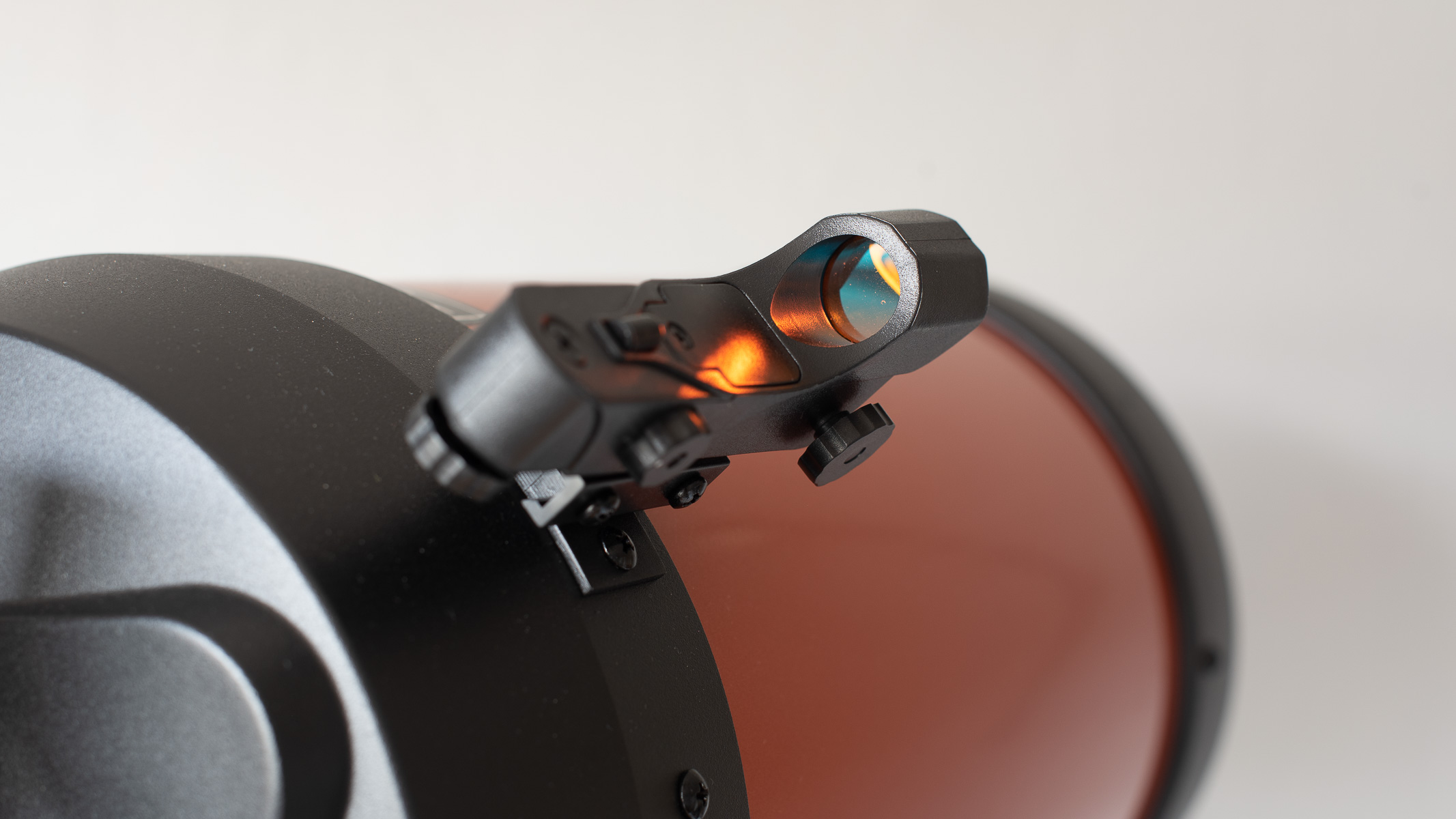
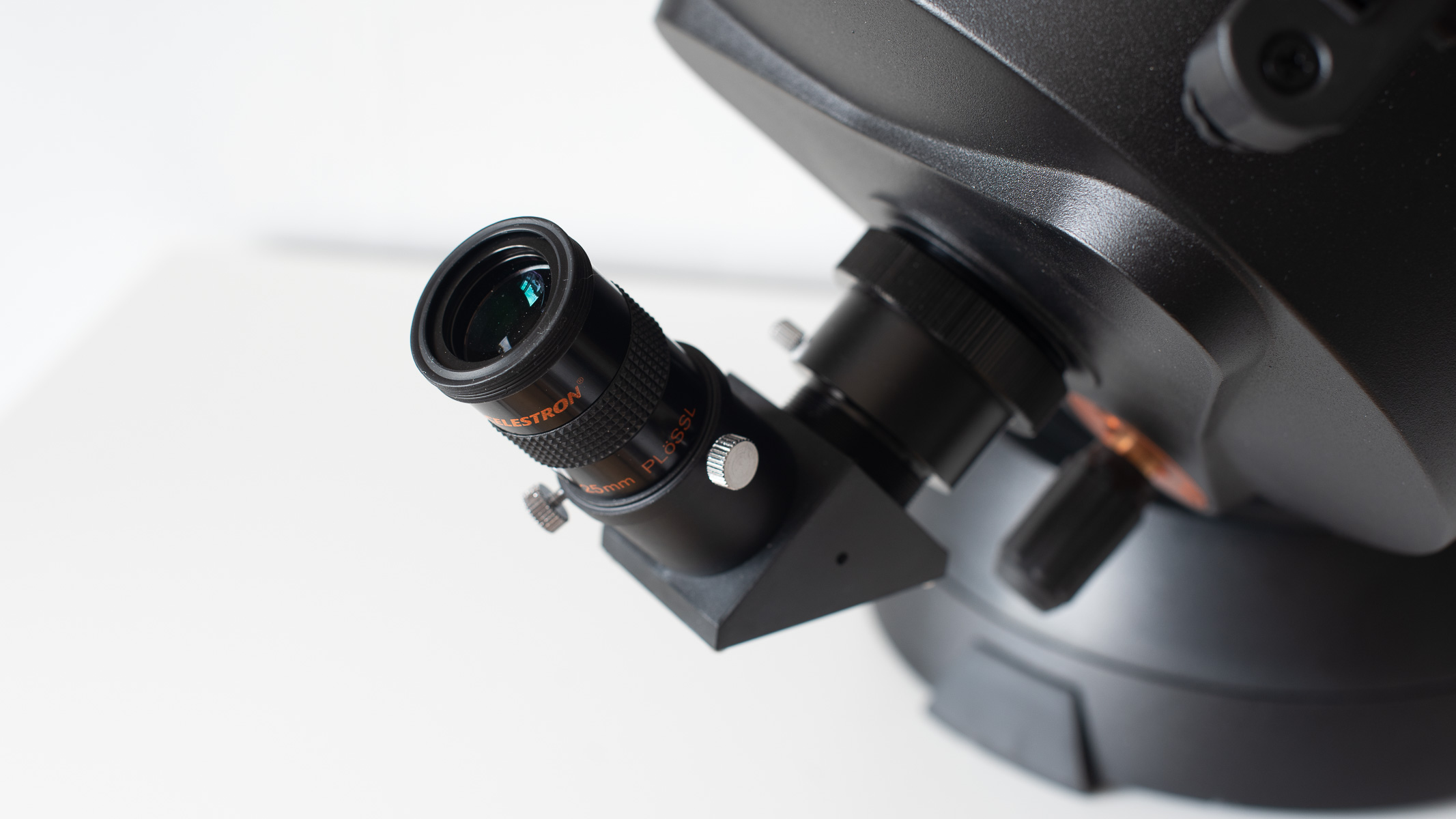
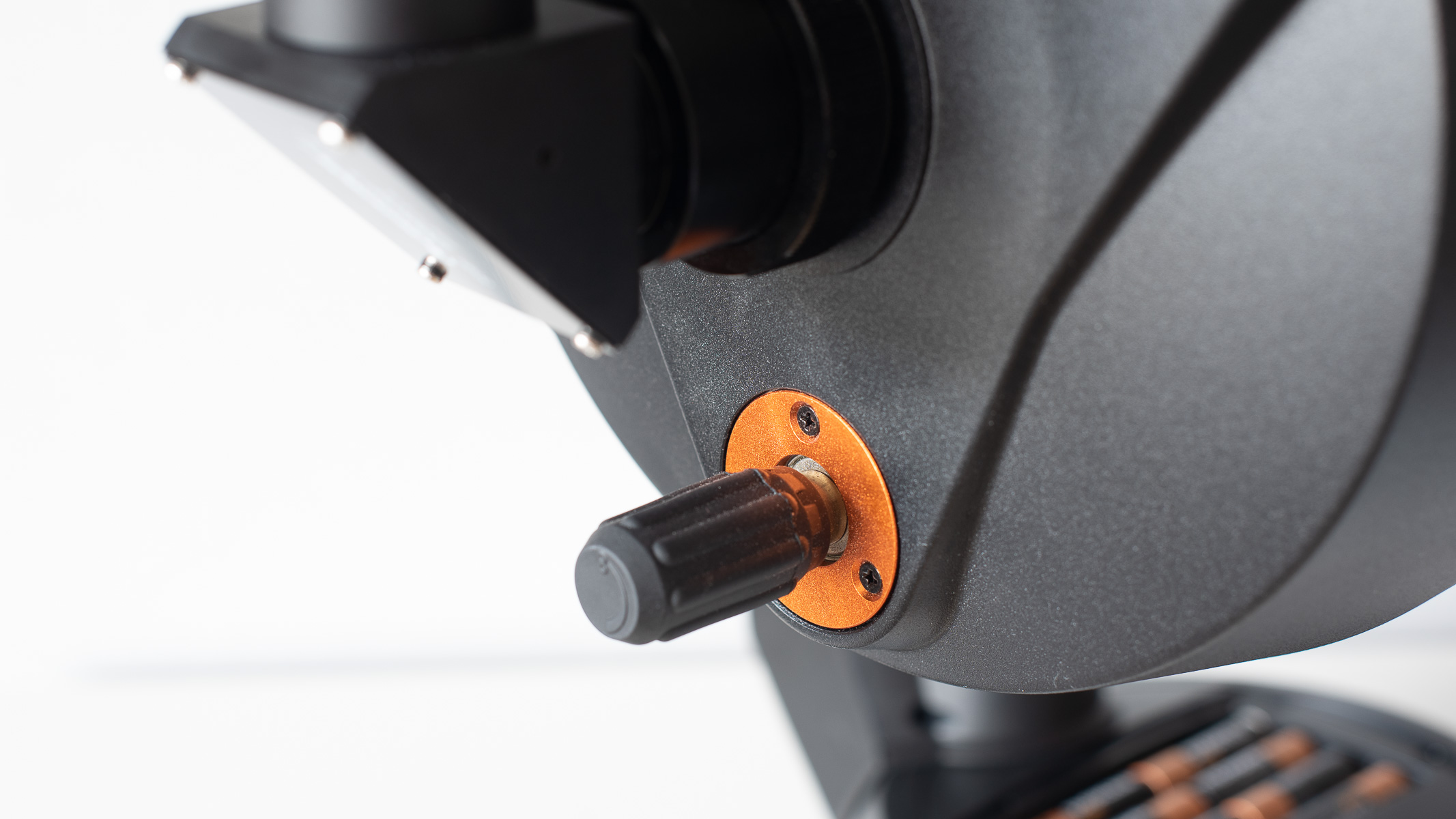
Specifications
Reasons to buy
Reasons to avoid
✅ You want excellent optics: this telescope provides sharpness across the entire field of view.
✅ You want to get the best bang for your buck: considering the quality you get with this telescope, it offers great value.
✅ You want a portable telescope: at just 32 lbs, this is one of the more lightweight models.
❌ You're on a budget: while it's good value, it's not cheap, and the outlay is expensive too.
❌ You want the fastest speeds: there's a little lag while
slewing which could get in the way for some.
❌ You're going to use it on the go: this telescope is so power-hungry we recommend you use it with mains power.
🔎 The Celestron NexStar 8SE is a fantastic telescope and one that would suit a beginner, intermediate or advanced skywatcher. Something simple enough for a beginner to get to grips with, but also please an advanced sky watcher is quite hard to come by. ★★★★½
Design: We love the design of the Celestron NexStar 8SE. It's very well made, and feels incredible solid and sturdy. It's one that will last for many years if you take care of it — and Celestron's signature orange color makes it stand out for the crowd. It sports high-quality Schmidt-Cassegrain optics which allow for beautifully clear views, and it has a motorized single fork arm mount and a handheld remote control.
Thanks to having a catadioptric construction, Celestron has been able to squeeze a huge amount of power into a short tube — this is one of the most compact deep sky telescopes on this list, making it possible to carry around with relative ease.
Performance: The large 8-inch aperture makes this telescope ideal for deep space since it can soak up a phenomenal amount of light. In our Celestron NexStar 8SE review we were seriously impressed by its optical prowess, which gave us consistently bright and sharp views across a range of different targets. Despite a short lag between pushing a button on the remote and the motor beginning to turn, we found the slewing and object tracking to be incredibly accurate, and its smoothness would make this scope fantastic for long exposure astrophotography as well.
Functionality: The scope is quick and easy to set up and align, even for beginners, and once aligned, the viewing experience is entirely automated. Simply select the celestial object you wish to view, punch the number in on the remote and the mount will automatically slew to your desired target. The only real downside is that it requires a whopping 8 x AA batteries, so we'd recommend kitting yourself out with a set of rechargeable batteries and a battery charger to keep the ongoing costs down.
- Read our full Celestron NexStar 8SE review
Attributes | Notes |
|---|---|
Design | Compact and user friendly, although not the most lightweight. |
Performance | Motor is impressively smooth when slewing and tracking. |
Functionality | We liked the in-built hand controller. |
Best smart telescope
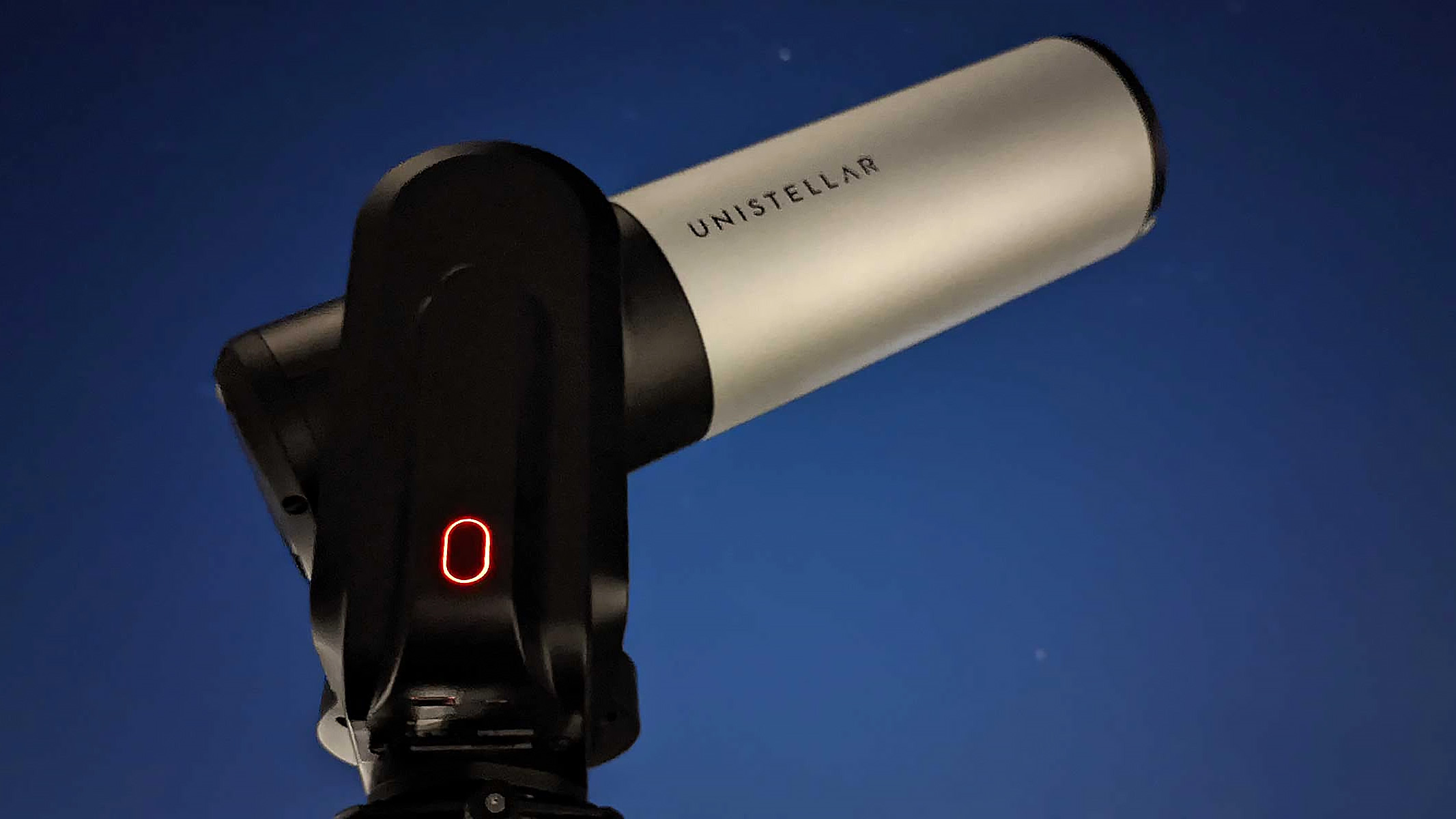
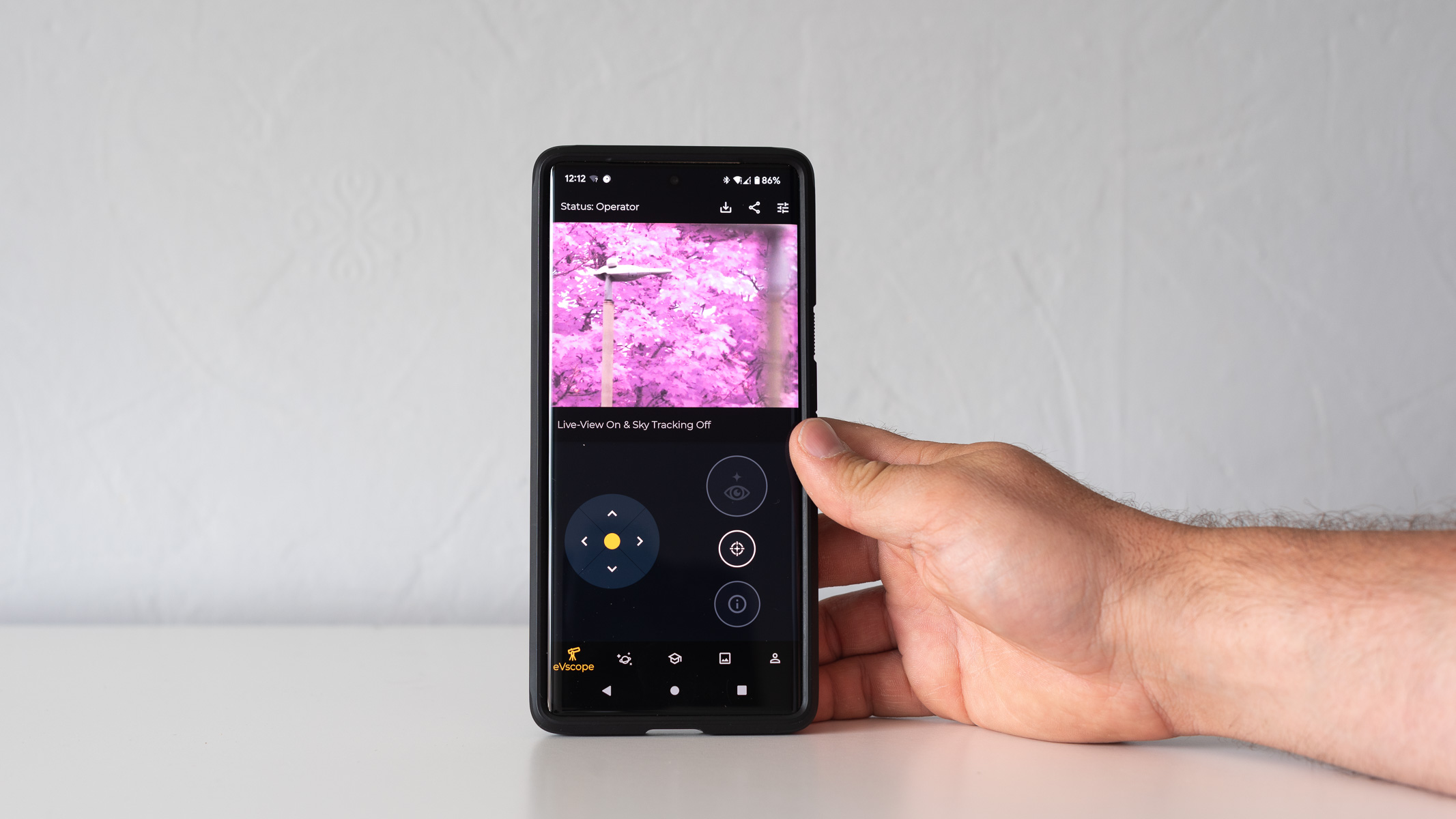
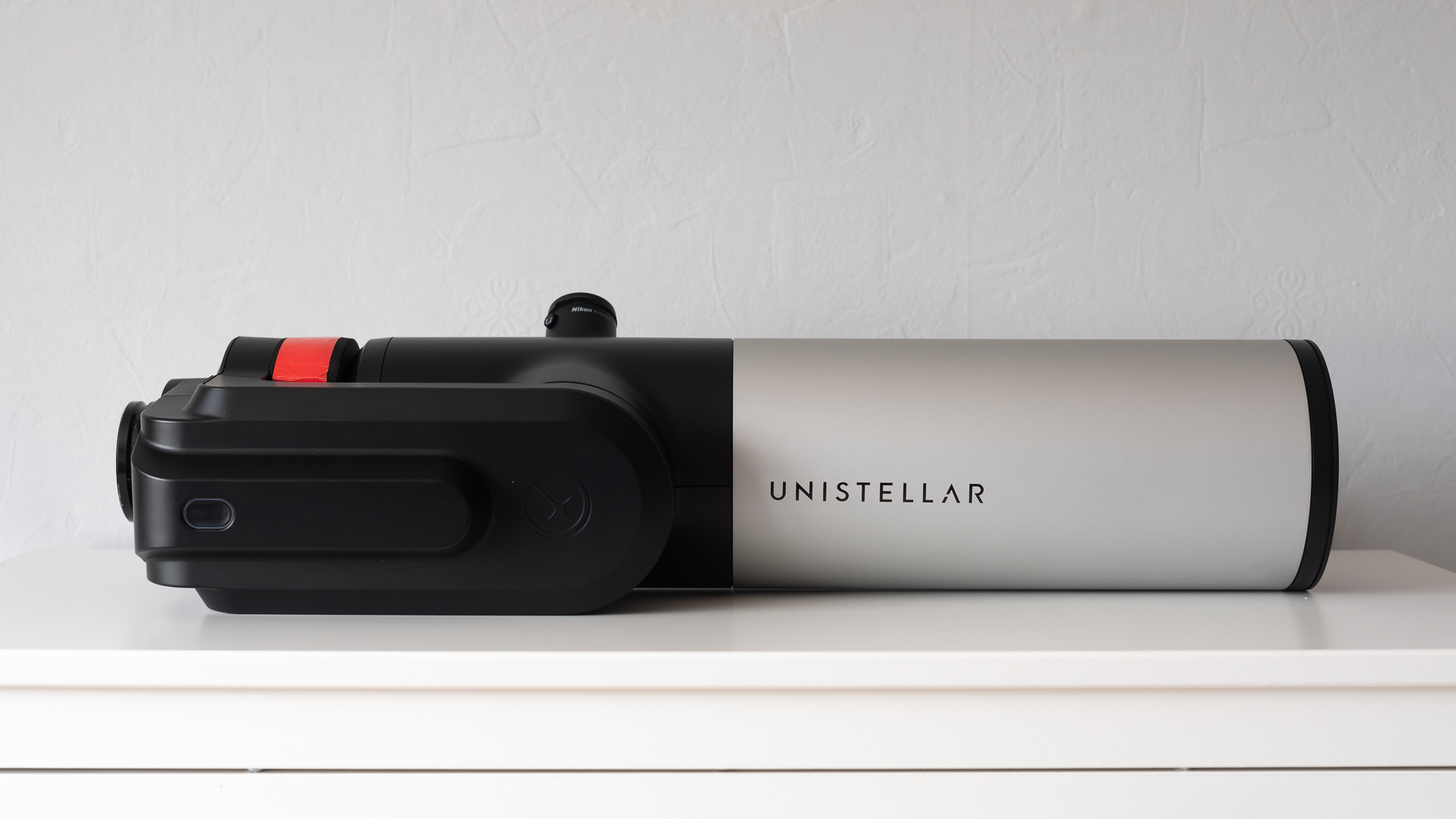
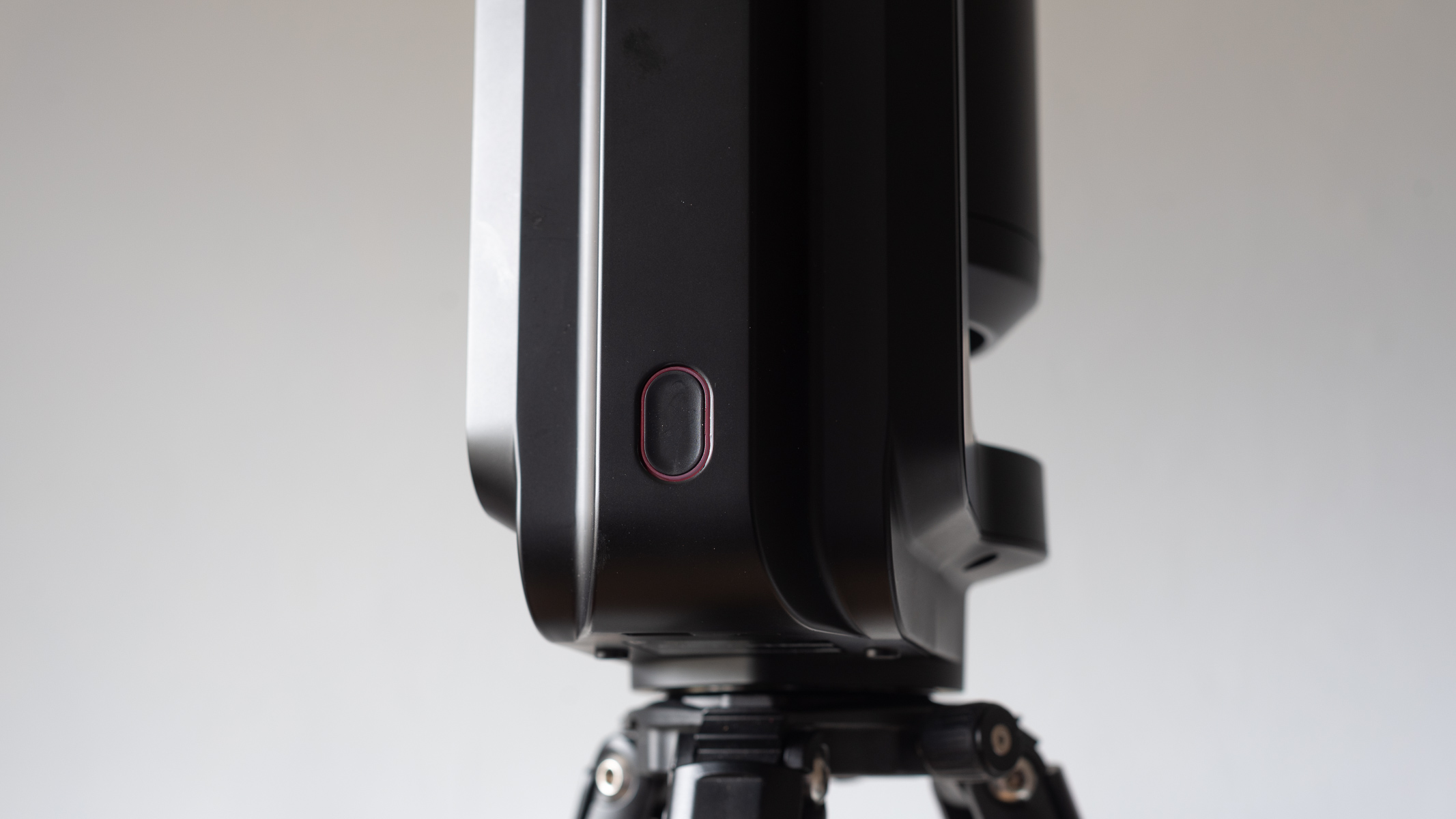
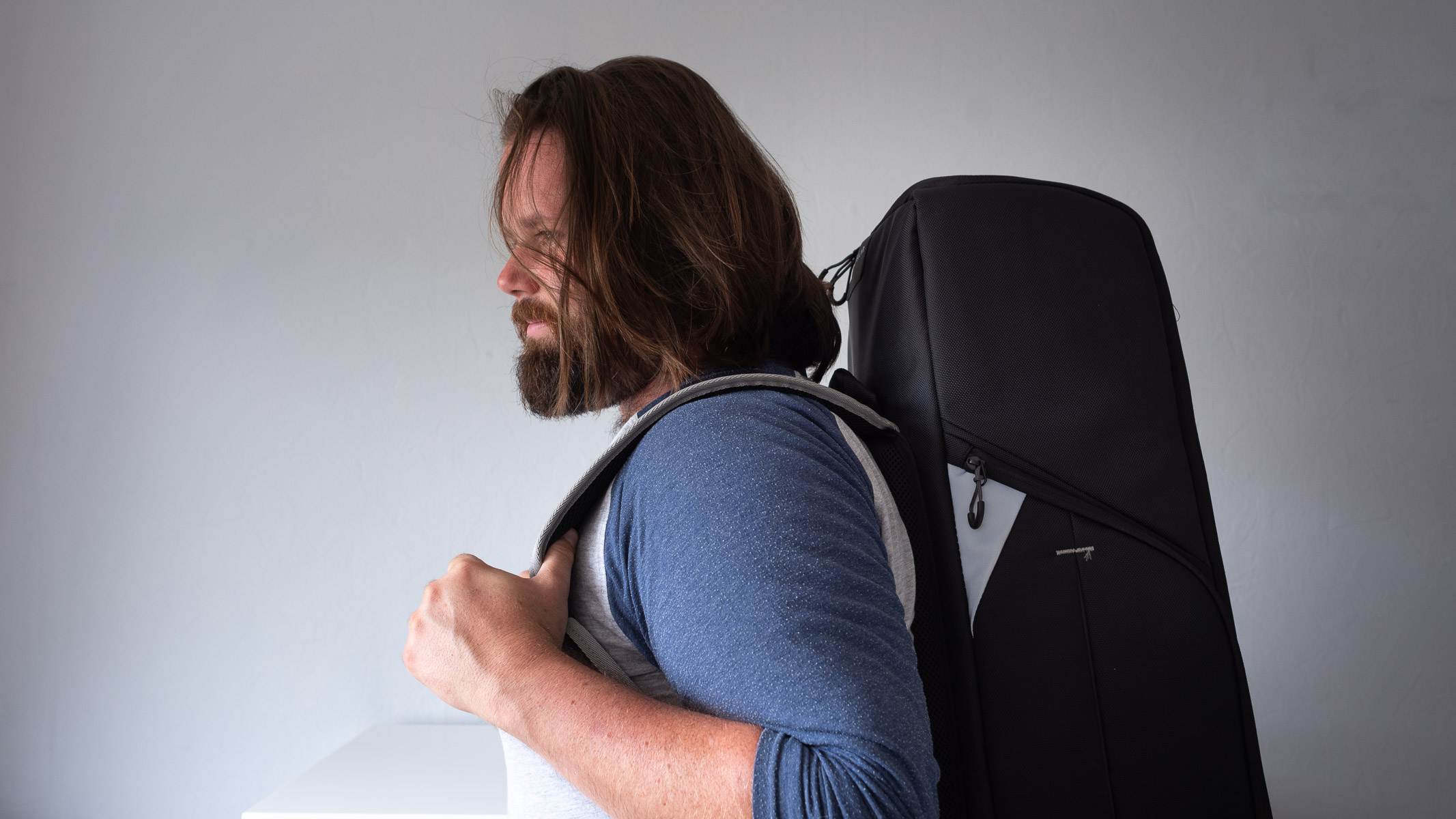
Specifications
Reasons to buy
Reasons to avoid
✅ You're a beginner: the setup is really simple and effortless.
✅ You care about the looks: the design of this telescope is super sleek.
✅ You want a good app: this one is well-designed and intuitive.
❌ You are used to the highest quality: the 7.7MP resolution isn't as good as what you can get with traditional telescopes.
❌ You're a purist: the smart functions and tech may not appeal to traditional sky-watchers.
❌ You're on a budget: this telescope is one of the more expensive ones on this list.
🔎 Photographers will absolutely love the eVscope 2 because it looks and feels much more like a premium photography kit. Purist astronomers who are used to using finder scopes, alignment processes and slightly dated handheld control remotes may find it a little jarring to start with, but the speed and beauty of the eVscope 2 is definitely worth trying out. ★★★★½
Design: We loved the sleek and minimalist design of the Unistellar eVscope 2. There is just a single power button on the main body of the telescope, with the rest of the controls being accessed via the Unistellar app. It's an appealing option for those looking for an innovative way to view and photograph the night sky.
This scope is an incredibly sophisticated device that merges a telescope with a camera, so you don't need extra camera gear. It has a 4.5-inch reflector and a built-in camera with a 7.7MP image sensor, making it simple to take and share pictures.
Performance: If you prefer traditional telescope gear, you'll like the Nikon eyepiece that comes with the set. But if you're into modern tech, there's also an electronic eyepiece available. This one features an OLED screen similar to what you find on mirrorless cameras. It's different from the optical view and can't be swapped with Barlow lenses or other magnifiers. Still, we like using it because the screen is excellent quality, with fantastic contrast and deep blacks.
If you're primarily using the Unistellar eVscope 2 as an astrocamera, you might find its 7.7MP sensor a little restrictive compared to a true DSLR or mirrorless camera. You won't be able to blow up photos very large for display. That said, we've found that the eVscope 2 performs valiantly compared to many dedicated astrocameras, and using it is very straightforward, taking out a lot of the hassle. If you're a beginner astrophotographer, then, this is a great place to start.
Functionality: There are few telescopes that are as easy to set up as the eVscope 2, which essentially aligns itself. All you need to do is power the telescope on and ensure it's connected to the app: Everything else happens automatically. You don't need any previous knowledge of the telescope itself or astronomy as a whole to be able to get the most out of using the Unistellar eVscope 2, either, as the app is very intuitive and easy to use. We'd be tempted to recommend this for beginners, if it wasn't for the huge price tag.
- Read our full: Unistellar eVscope 2 review
Attributes | Notes |
|---|---|
Design | Very sturdy tripod and simple telescope mount. |
Performance | Object go-to is intuitive and fast. |
Functionality | App allows you to easily go-to celestial objects. |
Best value
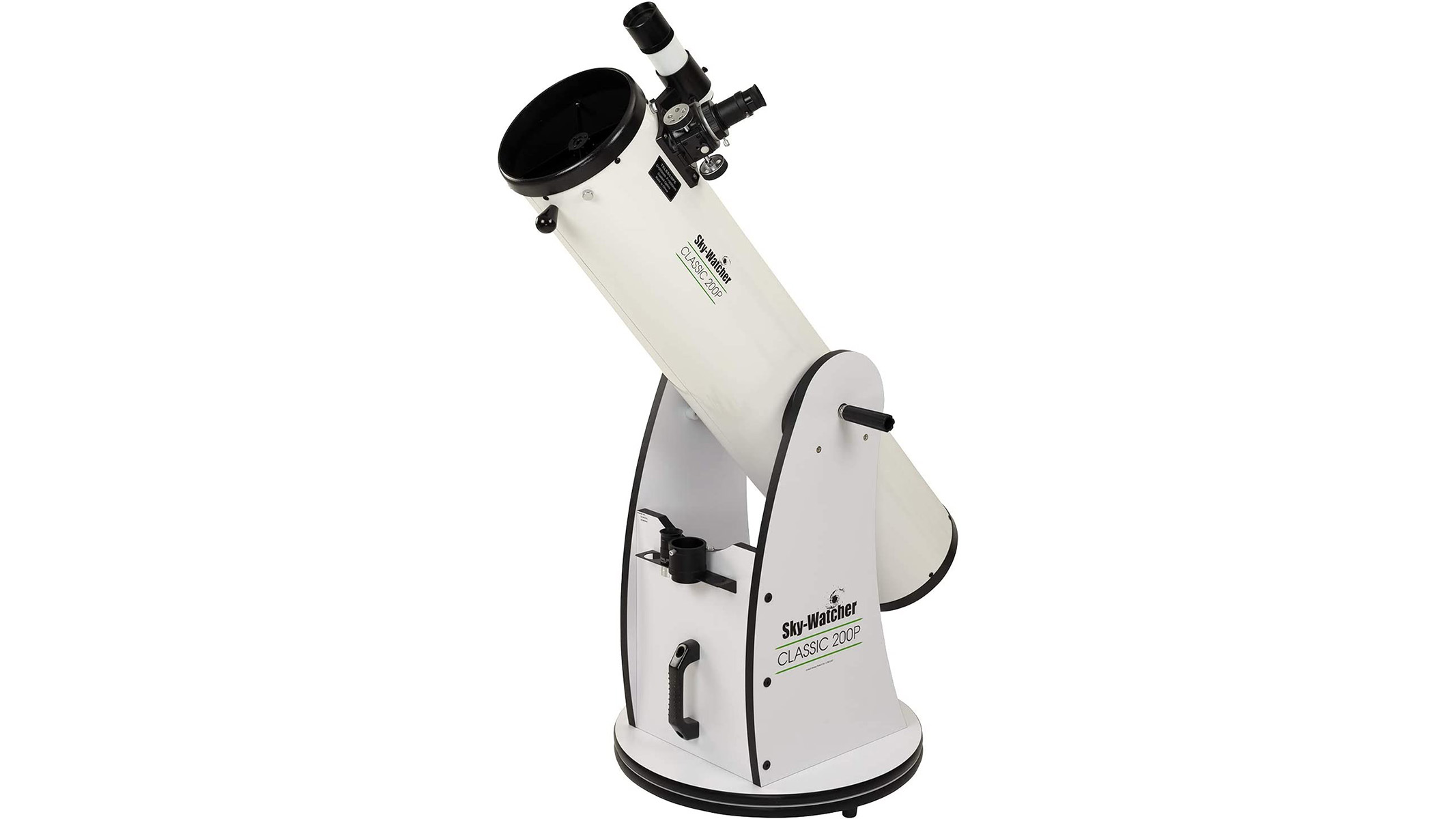
Sky-Watcher Skyliner-200P Classic
Our expert review:
Specifications
Reasons to buy
Reasons to avoid
✅ You want immersive deep-sky views: this telescope accepts 2-inch eyepieces.
✅ You want great aperture on a budget: this telescope offers an unrivaled aperture-to-price ratio.
✅ You want a sturdy scope: the mount on this model feels particularly strong.
❌ You want the most ergonomic telescope: it can be uncomfortable at some angles.
❌ You want electronic go-to functions: this telescope is not equipped with them.
🔎 For those looking for high-quality deep-space on a budget, the Sky-Watcher Skyliner 200P Classic is a fantastic choice. ★★★★½
Design: A telescope with a slightly bigger aperture can gather a lot more light, making images appear brighter. For instance, an 8-inch mirror gathers 77% more light than a 6-inch mirror, even though it's only 33% wider. The Sky-Watcher Skyliner-200P is the best affordable choice for deep-sky stargazing in this category. It focuses on giving you great performance without unnecessary fancy features.
The Skyliner-200P is a weighty telescope at 24kg, but its compact footprint of 54cm makes it easy to fit in tight storage spaces when stored upright. It is also quick to set up and pack away compared to other telescopes of this size.
Performance: There's no automatic tracking with the Sky-Watcher Skyliner 200P Classic: It has a basic Dobsonian mount which means you'll need to manually locate and track celestial objects for yourself. But we've been pleased with how smooth its movements are, making tracking pleasant and easy — if you're more of a traditional astronomer, you'll undoubtedly appreciate this.
The Skyliner 200P can accept 2-inch eyepieces on its dual-size focuser, which offer wonderfully immersive views of the deep sky. 2-inch eyepieces are great for achieving wider fields of view at lower magnifications, offering up wonderful vistas.
Functionality: If you want to explore deep space without breaking the bank, this telescope is a great deal. It's a sturdy, classic model that traditionalists will appreciate. But if you're interested in electronic features, you might want to check out the Flextube Synscan Go-To version of the same telescope. It has the same excellent optics but comes with user-friendly electronic functions.
Attributes | Notes |
|---|---|
Design | Quite heavy at 24kg. |
Performance | Dobsonian mount feels strong and sturdy. |
Functionality | No electronic Go-To function. |
Best premium telescope
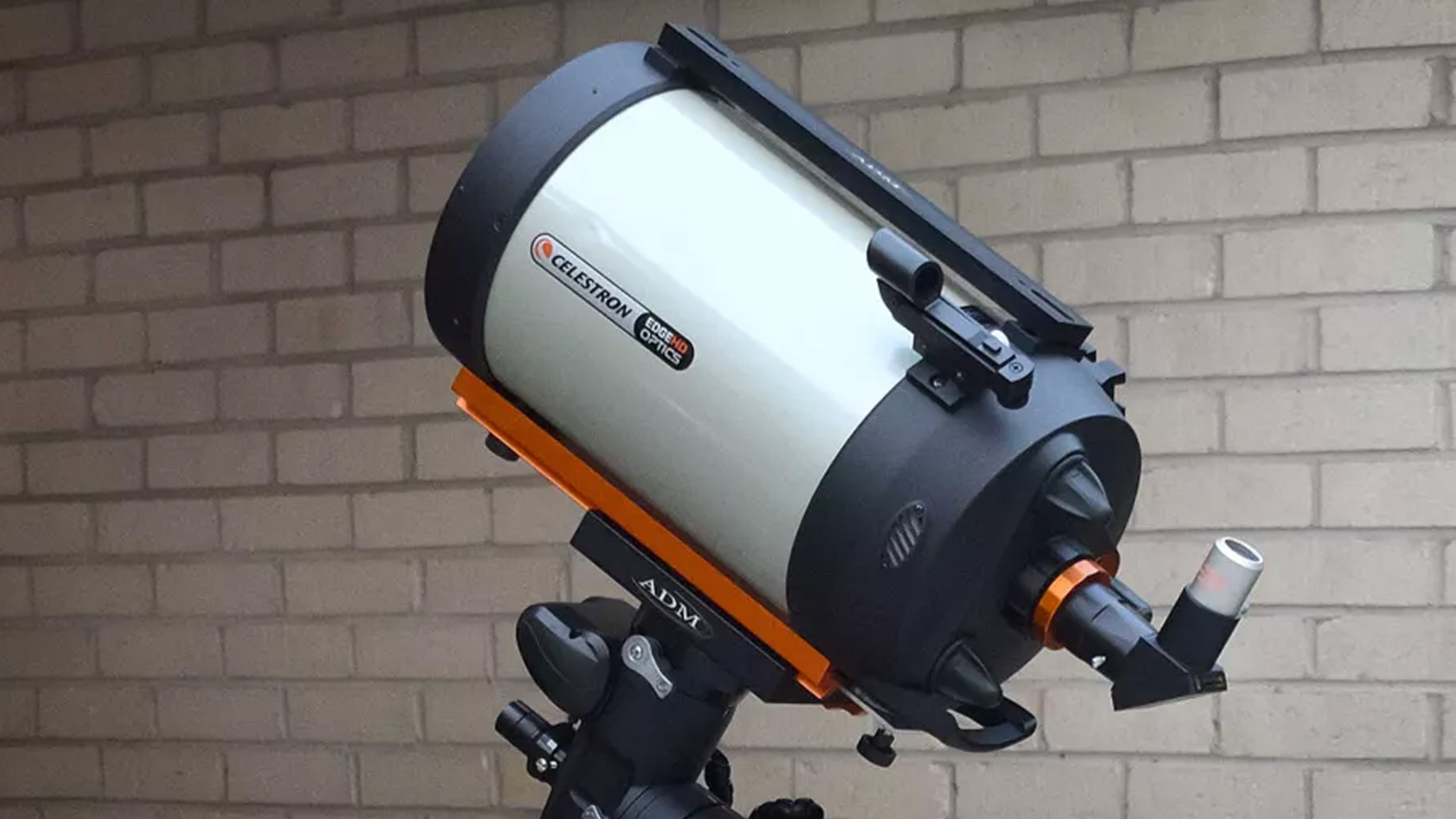
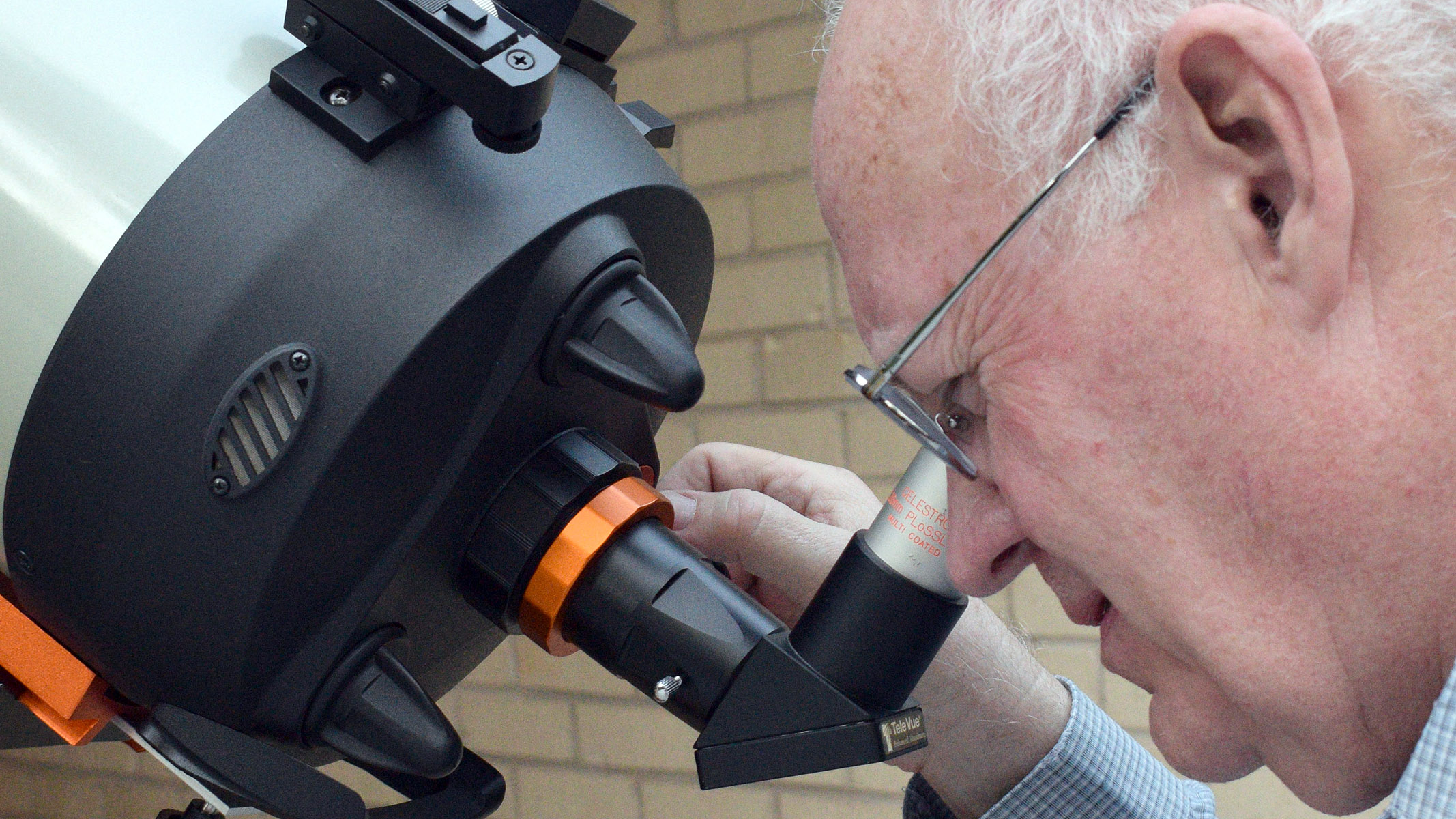
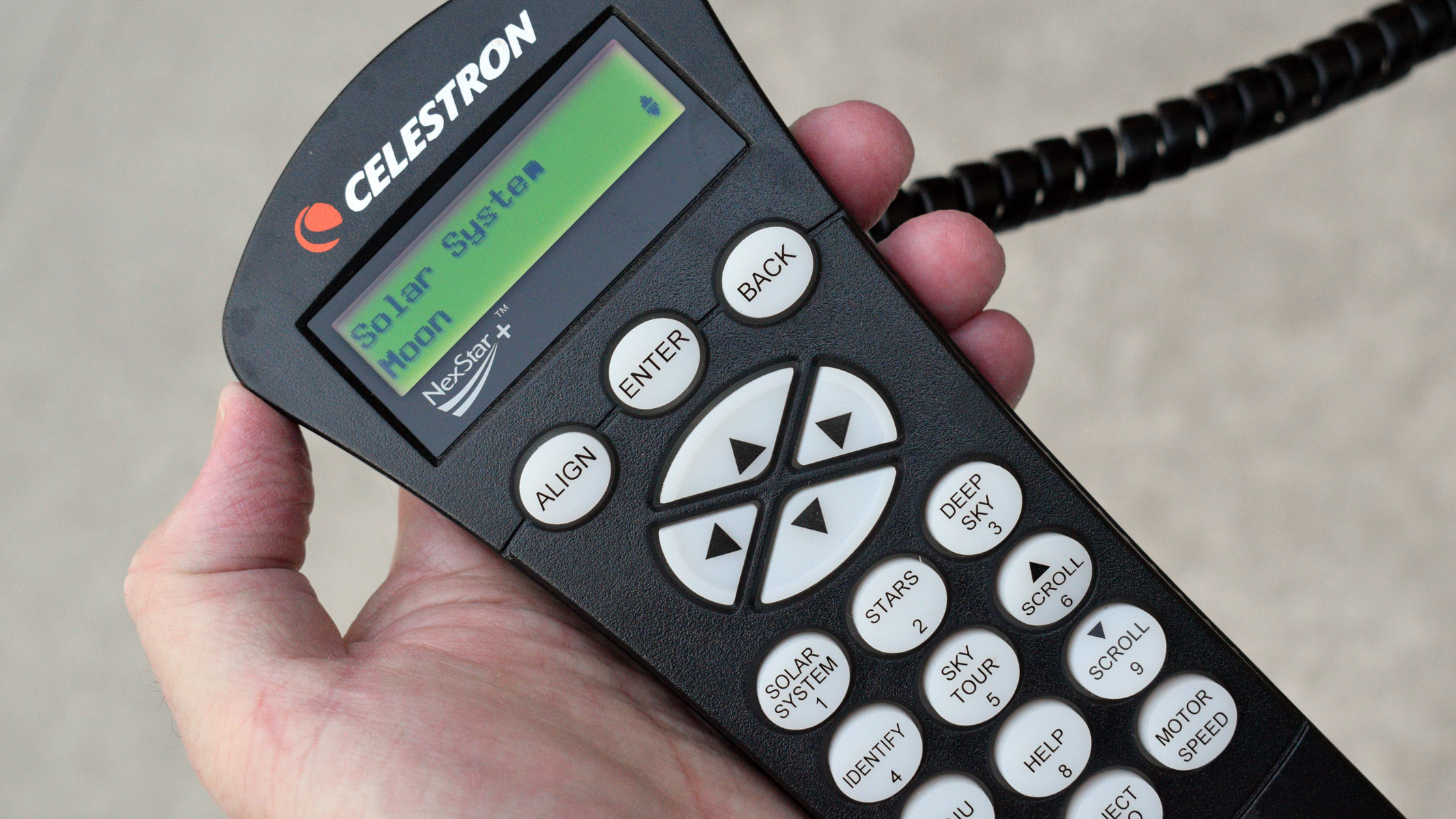
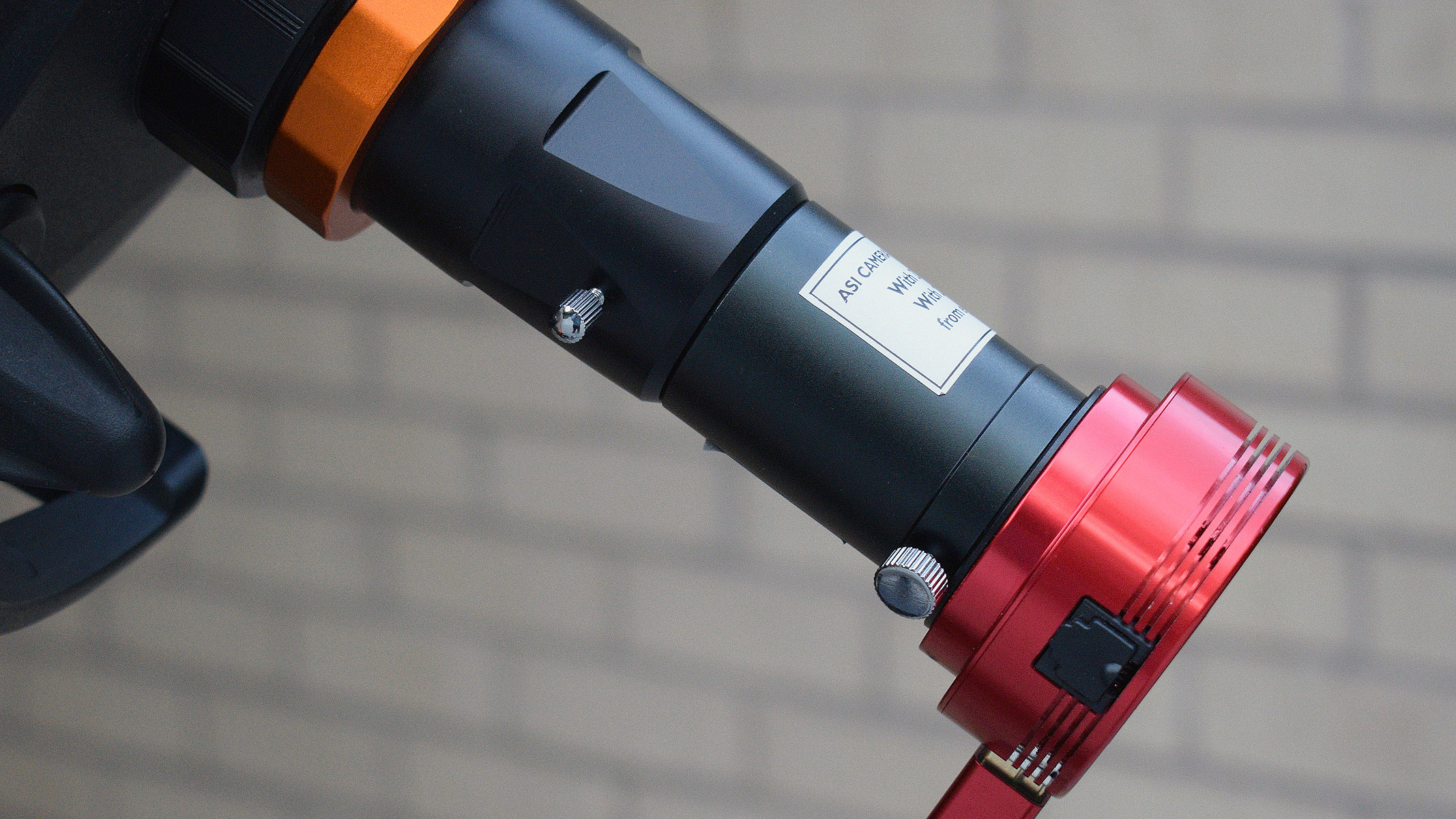
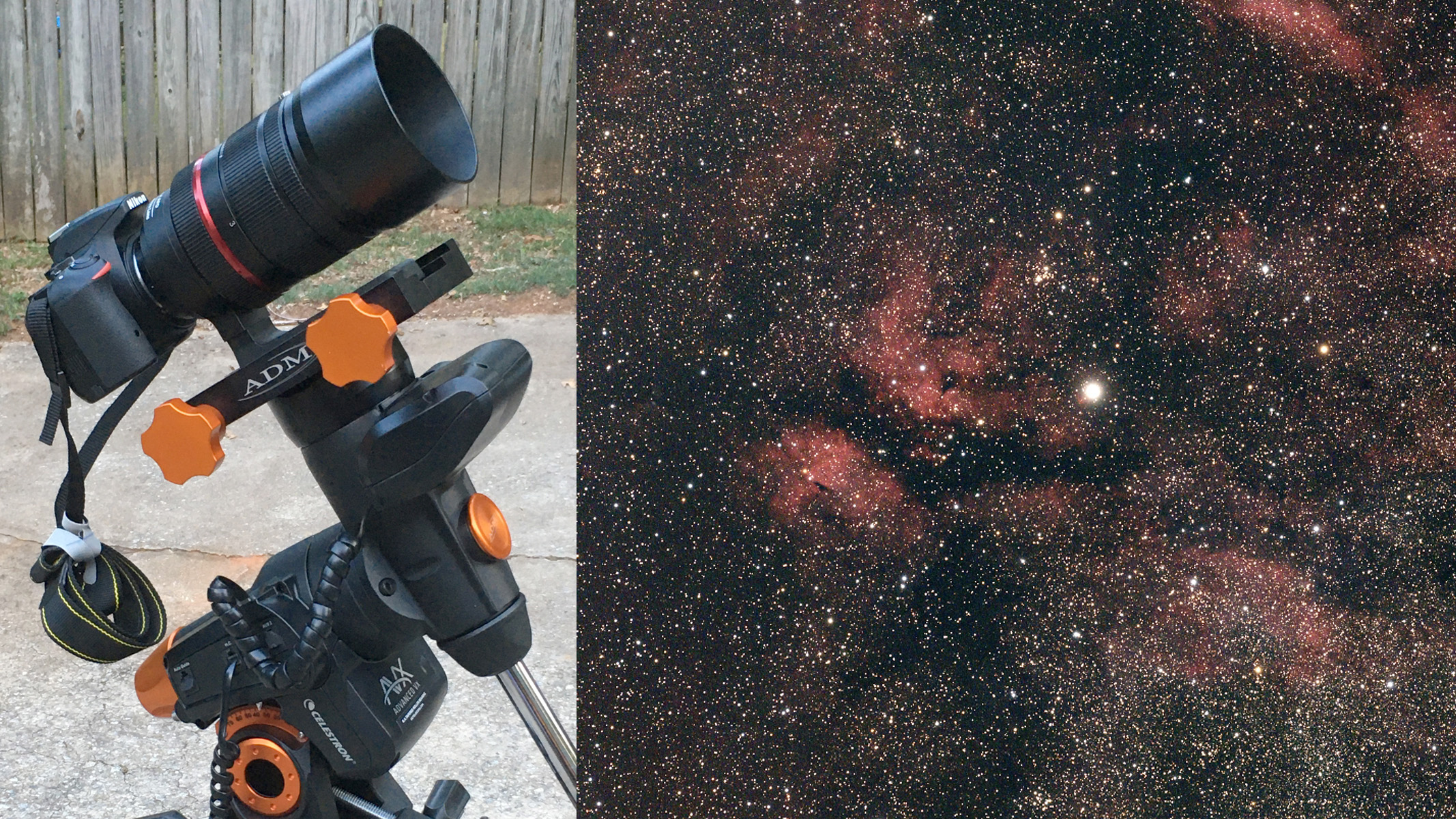
Specifications
Reasons to buy
Reasons to avoid
✅ You want some smart features: you get automatic alignment with StarSense.
✅ You want to take it on the go: this telescope has a built-in rechargeable battery.
✅ You want a portable telescope: this one is compact and easy to store.
❌ You're on a budget: this telescope is not the cheapest on this list.
❌ You want more aperture: this telescope is pricey considering its limited aperture.
❌ You want to use it for professional long-exposure photography: it needs a more robust mount.
🔎 If you're a serious amateur astronomer developing a deep understanding of both the sky and the telescope, then the Celestron Advanced VX 8 Edge HD is a good option. The telescope is as good as you could wish for in its size range. ★★★★★
Design: The Celestron Advanced VX 8 Edge HD features an improved Schmidt-Cassegrain optical design with additional lens elements intended to aid with astrophotography. Its computerized mount combines Celestron's NexStar firmware with a German-style equatorial mount that not only slews to your desired celestial object but is also compatible with a range of other cameras and telescopes using Vixen or Losmandy dovetails. This makes it an excellent choice for those who want to gain good views of the night sky with the option of dabbling in astrophotography at the same time.
Performance: The 8-inch aperture on this telescope offers extremely sharp views, even away from the center of the field. You'll be able to achieve majestic views of Saturn and Jupiter, see globular clusters resolved into stars and easily view Messier Objects. In extremely dark skies it can even bring out galaxies down to 12th magnitude. The supplied 40mm eyepiece offers 50x magnification but we'd recommend investing in an additional 20mm eyepiece with 100x magnification for general purpose and a 10mm eyepiece with 200x magnification for viewing the moon and planets.
Functionality: In our Celestron Advanced VX 8 Edge HD review, we particularly enjoyed stacking images of Jupiter to produce a view that was even better than you could hope to achieve by eye. However, we think you'd need a heftier mount for any serious long-exposure photographs of nebulas and galaxies.
The equatorial mount finds and tracks objects extremely well, though it requires a bit of knowledge to be able to align it correctly, so it's aimed more at intermediate to advanced astronomers than beginners. It's fantastic for attaching all manner of cameras to take pictures of the moon, planets and deep sky objects.
- Read our full Celestron Advanced VX 8 Edge HD review
Attributes | Notes |
|---|---|
Design | Lightweight, rugged computerized mount. |
Performance | Finds and tracks celestial objects reliably. |
Functionality | Great views of all types of celestial objects. |
Best for serious observers
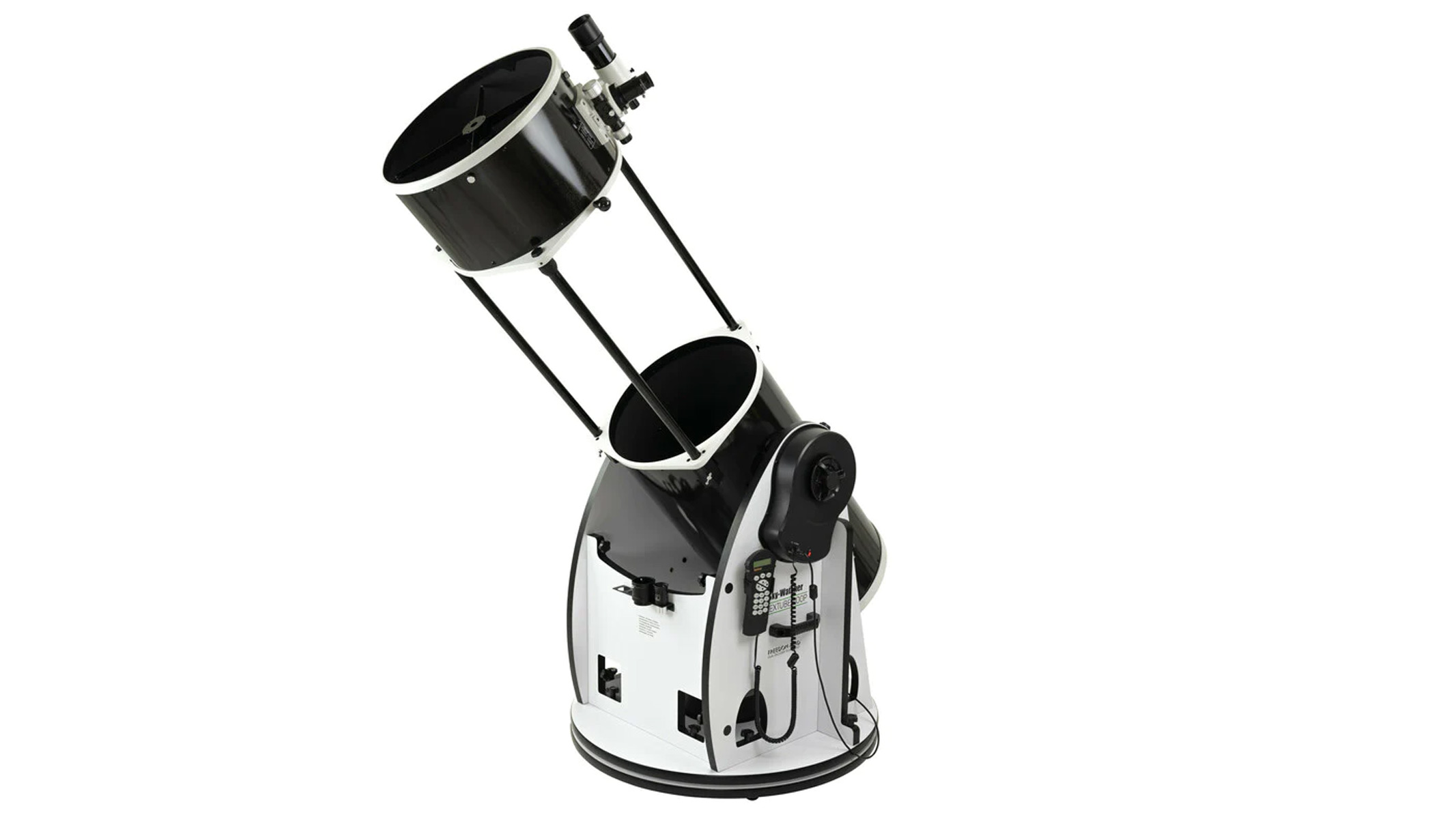
Sky-Watcher Flextube 16-inch 400P Synscan
Our expert review:
Specifications
Reasons to buy
Reasons to avoid
✅ You want great optical quality: the performance of this telescope is unbeatable, especially with deep-sky views.
✅ You want a portable telescope: this one is fairly light and easy to disassemble.
✅ You want smart features: this telescope has built-in go-to and tracking.
❌ You're a beginner: this telescope is quite complex and not the most intuitive.
❌ You don't have much space: this telescope is very large when fully assembled.
❌ You're after super precise kit: the tracking performance isn't the most accurate.
🔎 The Sky-Watcher Flextube 16-inch 400P Synscan will best suit seasoned astronomers who are well-used to handling complex pieces of kit and don't need very accurate tracking. ★★★★½
Design: The Sky-Watcher Flextube 16-inch 400P Synscan is huge thanks to its Dobsonian telescope — but it offers unrivaled views of the night sky. There's a 16-inch aperture here, which gives astonishing views of celestial objects in deep space.
You'll need to connect this telescope to the mains to use it (or use an external power tank), so along with its size, it makes traveling with it almost out of the question. That said, you can dismantle the telescope thanks to it having a truss tube design, which makes it slightly more portable/
Performance: You likely won't find anything to rival this telescope in terms of optics. It's one of the best we've seen in terms of performance and offers spectacular views of the deep sky.
With built-in Go-To and tracking technology, you'd think the Sky-Watcher Flextube should be easy enough to use. But in fact, it's rather complex. It's not the most intuitive telescope on the market, so we wouldn't recommend it for beginners. Its tracking performance also isn't the best, and if precision is important to you, it's probably one that's best to avoid.
Functionality: With dual-encoder technology, you can slew the telescope manually without having to reposition it. Each axis remembers its position, so you can switch between celestial objects smoothly while keeping tracking intact. This telescope provides an impressive experience for viewing deep-sky objects, thanks to its large mirror, especially when you're observing galaxies and nebulas under dark skies.
Still, it's not as intuitive for beginners as some of the other options, so we'd say that it's probably best to start with something less complex and work up to this one if you catch the deep sky bug.
Attributes | Notes |
|---|---|
Design | Very large when fully assembled. |
Performance | Unbeatable deep-sky views. |
Functionality | In-built Go-To and tracking. |
Best compact smart telescope
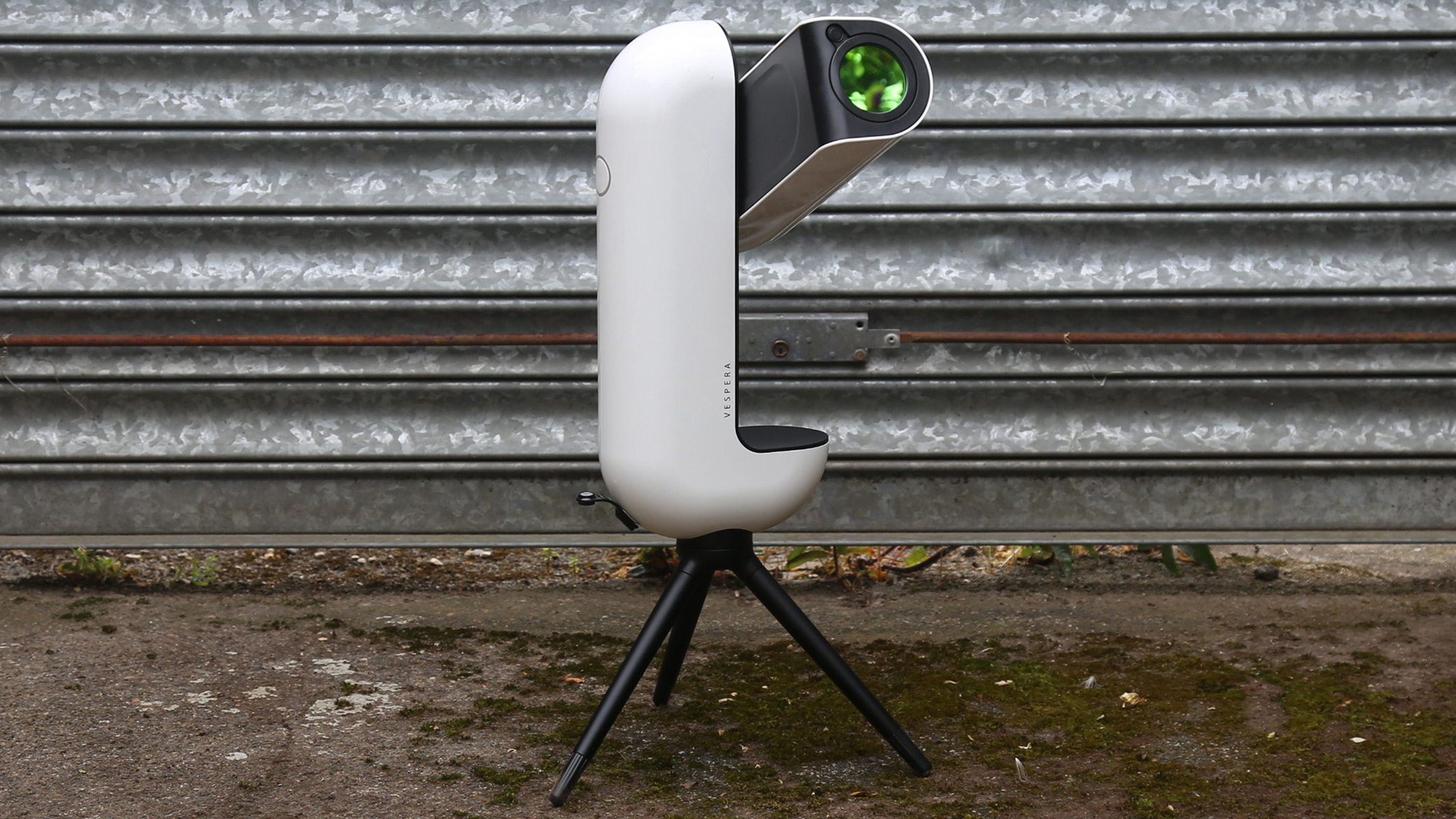
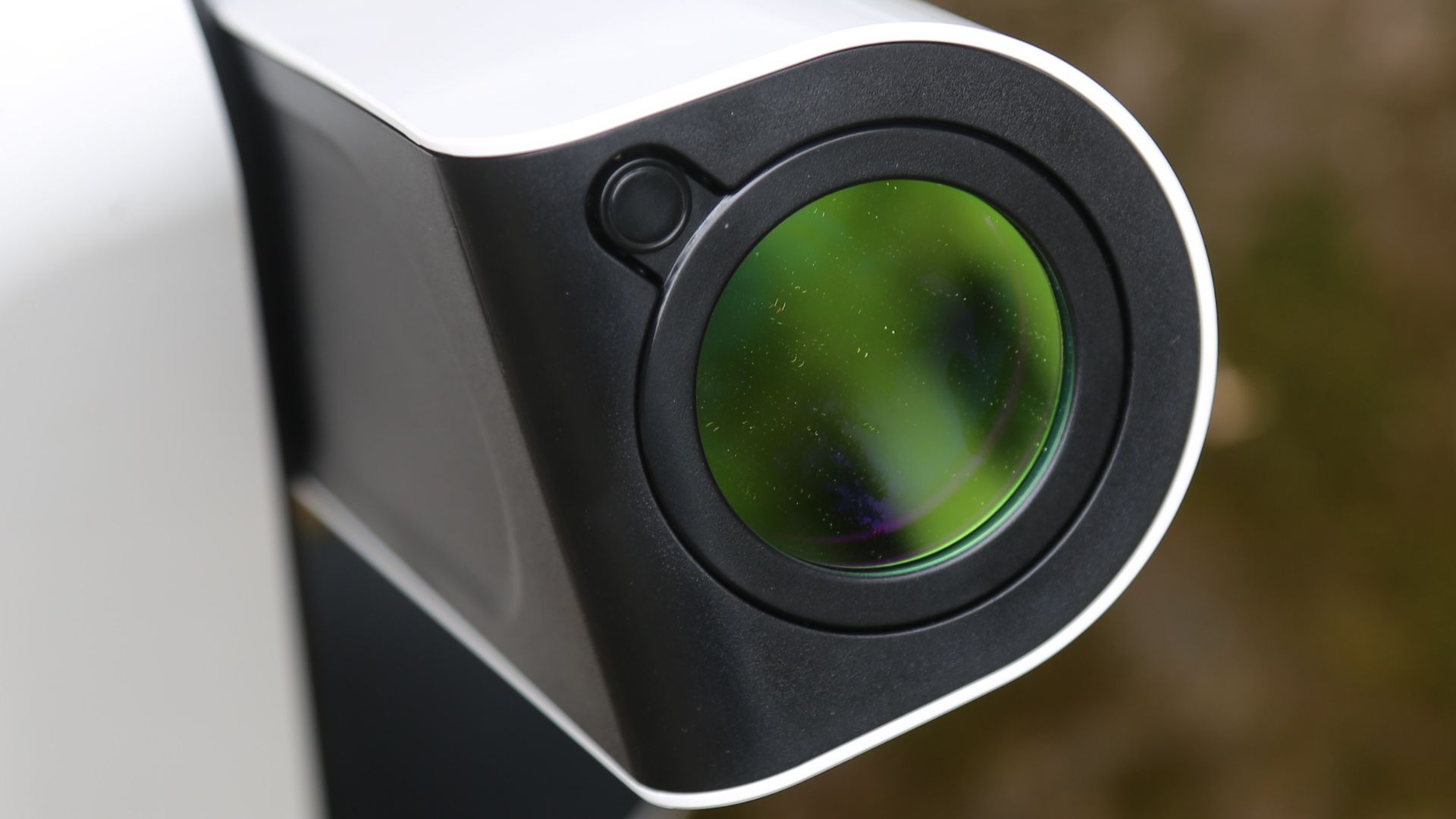
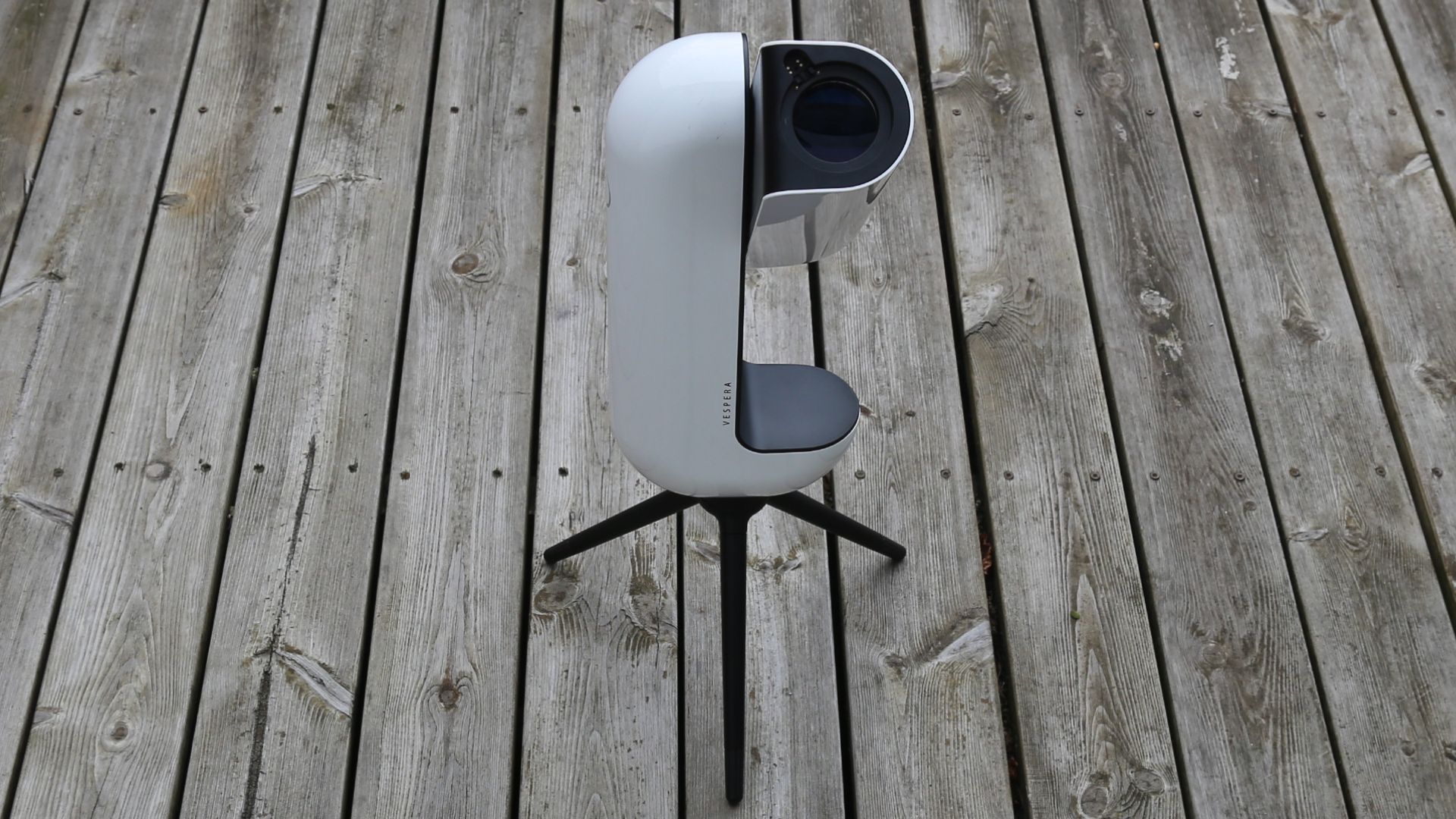
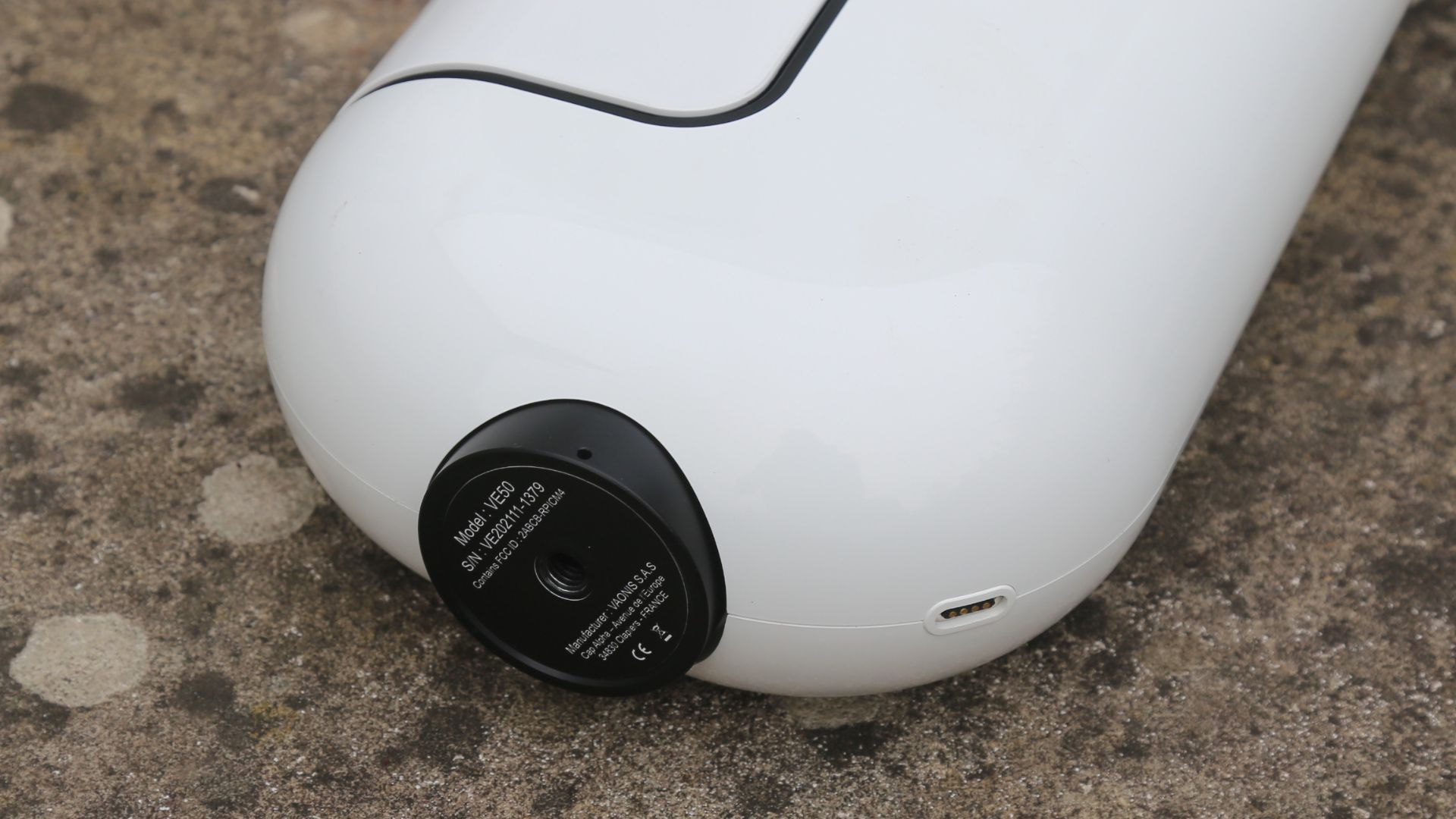
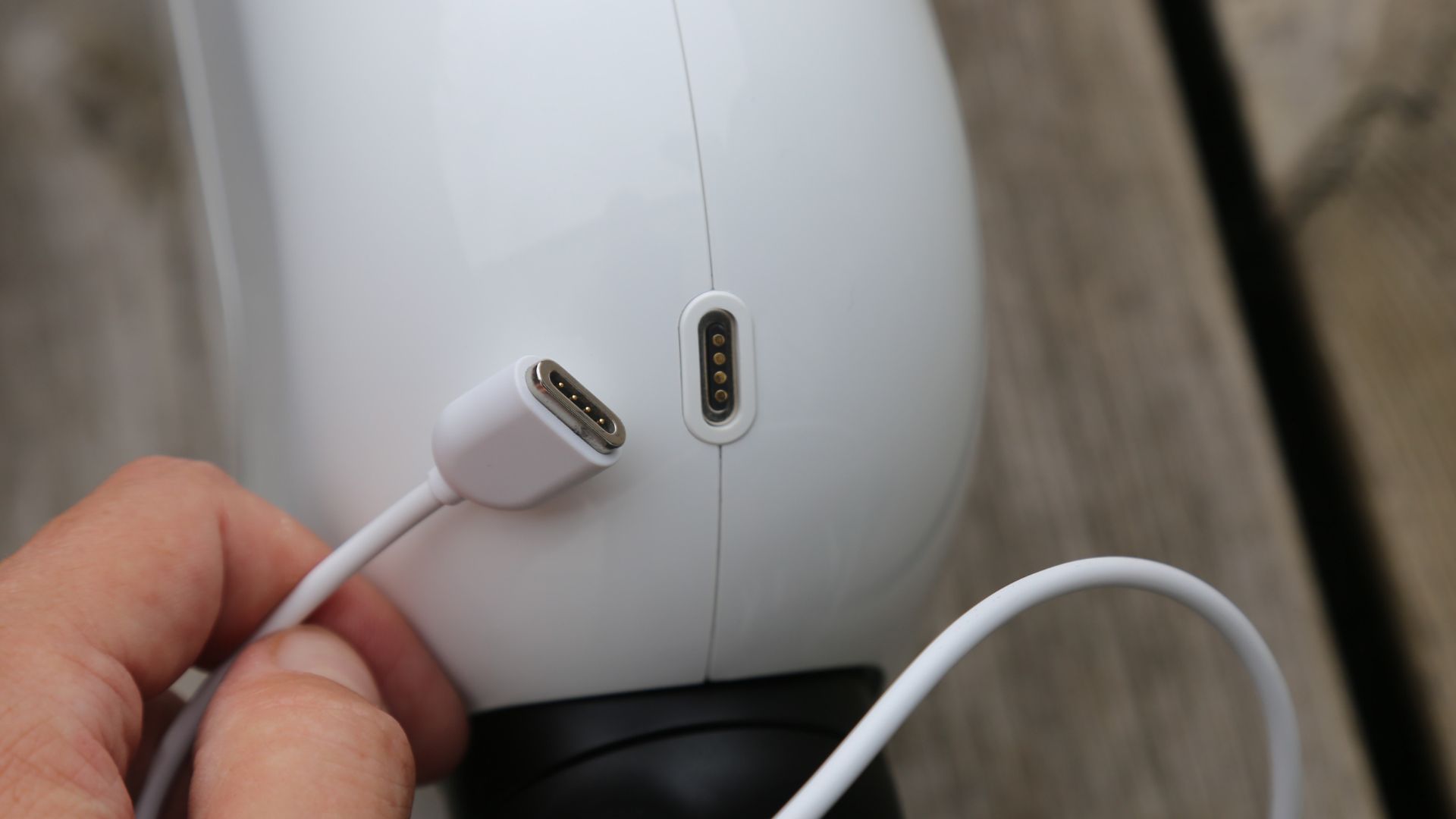
Specifications
Reasons to buy
Reasons to avoid
✅ You want an automatic telescope: you can operate this one all in the app.
✅ You live near a city: this telescope can cut through light pollution.
✅ You want social features: this telescope allows you to connect with other users.
❌ You're a purist: if you're a traditionalist sky-watcher, this isn't the one for you.
❌ You're on a budget: this is one of the most expensive telescopes on this list.
❌ You want the sharpest optics: what it has in smart features, this scope lacks in sharpness.
🔎 The Vaonis Vespera is a new and impressive, albeit very expensive, way of glimpsing deep-sky objects such as galaxies and nebulae even from a light-polluted city. It's easy to use and exceptionally travel-friendly. ★★★★½
Design: The Vaonis Vespera Observation Station offers a sleek and modern twist on traditional telescopes, focusing on exploring deep space. It's essentially a camera that uses live image stacking to send images to up to five smartphones or tablets via the Singularity app, instead of using an eyepiece. This allows it to have a compact white body, weighing only 10 lbs / 5 kg and measuring 15 x 8 x 3.5 inches / 40 x 20 x 9 cm, making it easy to store at home.
The Vaonis Vespera is a fantastic option for those who live in light-polluted cities to get a better look at the night sky, especially if you buy the optional light pollution filter for an extra $199/£158. It's fully automated and easy to use, making it a great option for beginners and those with less experience too.
Performance: The Vespera claims that it's "Ultra HD", but we've found its images to be relatively low in resolution. The maximum is can output is 1920x1080, which may be HD but certainly not Ultra HD. They're also a little soft, lacking some of the extra detail we'd have liked to see. It's adequate enough, though, especially for beginners, but if you're a more experienced smart telescope user, you might expect a little extra pizazz.
The Vespera has a Sony IMX462 image sensor which takes multiple images at once then stacks them on top of each other. What's particularly neat is that you can watch this process happening in realtime in the accompanying app. The app will also let you know how long you need to photograph a target in order to achieve the best results. Naturally, it varies from object to object, and so having that extra information from the app is very useful indeed.
Functionality: Setting up the Vaonis Vespera couldn't be simpler. Its star recognition software is incredibly advanced, automating the entire process. You'll just need your smartphone nearby, as it uses its GPS to calibrate itself. Plus, it automatically tracks targets and adjusts itself for the Earth's rotation while also determining the best focus settings for different situations.
Its price point means it's out of the budget of most beginners, unfortunately, but if you are a newcomer to astronomy who can stretch to its $1400+ price tag, you'll absolutely love how easy this telescope is to use.
- Read our full Vaonis Vespera Observation Station review
Attributes | Notes |
|---|---|
Design | Sleek & futuristic design. |
Performance | Can't observe planets, but copes well with light pollution. |
Functionality | Easy to set up and has an excellent smartphone app. |
Best for versatility

Sky-Watcher Skymax 150
Our expert review:
Specifications
Reasons to buy
Reasons to avoid
✅ You want want an all-rounder telescope: it can do planetary and lunar observations as well as deep-sky observing.
✅ You want a lightweight telescope: at 12.5 lbs, this is one of the lighter models on this list.
✅ You want high-quality optics: this telescope renders no chromatic aberration or fringing.
❌ You are a beginner: complete novices may struggle with this complex telescope.
❌ You want a wide field of view: this telescope has a smaller one than some others on this list.
🔎 The Sky-Watcher Skymax 150 is a versatile telescope offering excellent optics. For the price, it's a great mid-field telescope, suitable for seasoned sky-watchers. ★★★★
Design: The Sky-Watcher Skymax 150 is a versatile telescope perfect for observing planets, the moon, and deep space objects. Priced at under $1000, it provides fantastic value for good quality stargazing equipment. However, it's important to note that sometimes it comes with a tripod, and sometimes it doesn't, depending on where you buy it. So, it's a good idea to do some research before making your purchase.
Performance: The Skymax 150 excels in optics, delivering exceptional performance with no chromatic aberration or color fringing. The sharpness remains consistent across the entire field of view, and you can even achieve high-contrast images if that's what you're aiming for.
The main downside of the Skymax 150 is its somewhat narrow field of view. Although nebulas and clusters look amazing, getting them fully in view can be a bit tricky. Still, you can see galaxies and some planetary nebulas with it.
Functionality: This is a very complex telescope to use, and so we wouldn't necessarily recommend it for complete beginners. It's not completely unintuitive, but without any detailed instructions, it takes some time to get used to. There are certainly better, more user-friendly telescopes on the market for beginners.
That aside, we think the Skymax 150 is fantastic in use once you've become accustomed to its quirks. It offers up fantastic views thanks to its high quality optics and, for a deep space telescope, it's surprisingly lightweight, meaning that traveling around with it is an option.
Attributes | Notes |
|---|---|
Design | Not always supplied with a tripod. |
Performance | Excellent optics are the standout feature. |
Functionality | Narrow field of view compared to others. |
Best for traditional astrophotography

Sky-Watcher Quattro 150P
Our expert review:
Specifications
Reasons to buy
Reasons to avoid
✅ You're after precision optics: the mechanics on this telescope are impressive.
✅ You're a sky-watching purist: this traditional astrograph will suit you.
✅ You're on a budget: this delivers great optics at an affordable price.
❌ You don't own a tripod: This doesn't come with a mount and there's no option for a bundled mount.
❌ You want computer assistance: This telescope does not have any smart features or connectivity.
🔎 The Orion 6-inch f/4 Newtonian Astrograph has the optical power to deliver superb quality images of deep space objects such as galaxies and nebulas, as well as objects that are closer to home. ★★★★
Design: The Sky-Watcher Quattro 150P absolutely can be used as a regular telescope, and it comes with a 22mm eyepiece for just that purpose. However, this is designed for astrophotography and it boasts the optical quality to deliver on that front.
Whether you're shooting or viewing, its optical finderscope is a real boon. It's a striking piece of equipment, though the one catch is that it doesn't include a mount; nor does Sky-Watcher offer it as a bundle. However, you can purchase your own mount, including a motorised one if you'd like to be able to home in on celestial objects.
Performance: The Sky-Watcher Quattro 150P is an excellent choice for astrophotography and it punches well above its weight, offering performance and specs you'd expect from more expensive scopes. We reviewed the Sky-Watcher 200P EQ5 and were seriously impressed, and you can expect that same quality from the 150P.
Functionality: Sky-Watcher has gone to great lengths to make sure that the Quattro 150P can support the weight of astrophotography cameras. And yet, despite this, it's light enough, at 5.7 kg, to be easily portable. If deep space astrophotography is your goal, this scope seriously fits the bill.
Attributes | Notes |
|---|---|
Design | No mount included. |
Performance | Powerful optics for the price. |
Functionality | Works with all cameras but no smart features. |
Best for simple setup




Specifications
Reasons to buy
Reasons to avoid
✅ You like using an app: There's only one button on the eQuinox 2: Other than turning the telescope on, everything is controller via a smartphone app.
✅You want simplicity: You won't need to worry about eyepieces or any additional accessories: Everything you need is included here.
❌ You're on a budget: This is a very expensive telescope, so it's not a purchase to make lightly.
❌ You want a traditional experience: Being a smart telescope, the eQuinox 2 does all the work, so if you're looking to navigate the night skies yourself, you're going to need to look elsewhere.
🔎 Unistellar eQuinox 2: Easy to use and seriously beautiful to look at, smart telescopes really don't come much better than this. It's suitable for beginners and experts alike, but its price tag will probably put off some newcomers. ★★★★½
Design: The Unistellar eQuinox 2 is a beautifully-designed telescope. If you care about aesthetics, it's hard to be disappointed here. It has a sleek, effortless design with just one button appearing on the body of the telescope. It's very similar in appearance to its predecessor, the original eQuinox, with matte black plastic casing combined with brushed gray metal.
It connects onto an (equally stylish) tripod with a single fork arm, and it's held in place with two set screws. The power button stands out thanks to its LED highlight, and the color changes depending on whether you're connected to your smartphone (solid red) or fading purple (trying to connect).
Performance: The eQuinox 2 packs in a lot of technology into its sleek body. The app is the hub of everything the telescope can do, and thankfully it's simple to use and speedy to complete operations (although you may be hampered somewhat if your phone is outdated). It'll take a few minutes to connect to the app and be set up, but from that point onwards, finding the view you want is very straightforward. The app will generate a list of deep sky objects that will be available in your location in the next couple of hours, and you can select the one you want to go to. Alternatively, you can search yourself for a specific celestial object.
The telescope slews quickly and its motor is quiet, making navigating a smooth and enjoyable experience. In our Unistellar eQuinox 2 review, we praised the instant images created with the telescope, with the app even storing photographs with no extra effort involved.
Functionality: The only real problem we've encountered with the eQuinox 2 is that it doesn't orientate well at twilight: You'll have to wait until quite some time after dusk. It's something to bear in mind if you're planning to use this telescope in parts of the world that don't get fully dark at certain times of the year. When it is orientated, though, you'll be up and running in a matter of minutes, navigating all manner of nebulas, galaxies and star clusters without a hiccup.
- Read our Unistellar eQuinox 2 review for the full lowdown.
Attributes | Notes |
|---|---|
Design | Slim, sleek and beautiful. |
Performance | Smart functionality, everything operated via the app. |
Functionality | Easy to use with no prior experience, although it can be tricky to orientate during twilight. |
Best telescopes for deep space: Comparions
Product | Rating | Optical design: | Mount type | Aperture | Focal length | Focal ratio | Eyepieces included | Highest practical magnification | Weight |
|---|---|---|---|---|---|---|---|---|---|
Celestron NexStar 8SE | ★★★★½ | Schmidt-Cassegrain | Computerized Altitude-Azimuth Single Fork Arm | 8-inch (203mm) | 2032mm | f/10 | 25mm | 180x | 32 lbs (14.5kg) |
Unistellar eVscope 2 | ★★★★½ | Reflector | Alt-azimuth | 4.5-inch (114mm) | 450mm | f/3.9 | N/A | 50x optical, 150x digital | 19.8 lbs (9kg) |
Sky-Watcher Skyliner-200P Classic | ★★★★½ | Newtonian reflector | Dobsonian | 8-inch (203mm) | 1200mm | f/5.9 | 10mm (120x) and 25mm (48x) | 406x | 52 lb (23.6kg) |
Celestron Advanced VX 8 Edge HD | ★★★★★ | Schmidt Cassegrain compound reflector | Single Fork Arm Altazimuth GoTo | 8-inch (203mm) | 2032mm | f/10 | 12mm (150x) and 40mm (38x) | 480x | 40.6 lb (18.4kg) |
Sky-Watcher Flextube 16-inch 400P Synscan | ★★★★½ | Truss tube Newtonian reflector | Go-to Dobsonian | 16-inch (406mm) | 1800mm | f/4.4 | 10mm (72x) and 25mm (180x) Plössl | 799x | 72 lbs (32.7kg) (OTA), 105 lbs (47.6kg) (Mount) |
Vaonis Vespera Observation Station | ★★★★½ | Apochromatic (APO) quadruplet refractor | Motorized GoTo alt-azimuth | 2-inch / 50mm | 200mm | f/4 | N/A | 33x equiv | 11 lbs (5kgs) |
Sky-Watcher Skymax 150 | ★★★★ | Maksutov-Cassegrain | Not included | 6-inch (150mm) | 180mm | f/12 | 2-inch 28mm eyepiece | 295x | 12.5 lbs (5.7kgs) |
Sky-Watcher Quattro 150P | ★★★★ | Newtonian reflector | Not included | 6- in (150mm) | 600mm | f/3.45 | 22mm | 259x | 12.6 lbs (5.7 kgs) |
Unistellar eQuinox 2 | ★★★★½ | Newtonian Reflector | Motorized GoTo alt-azimuth | 4.49 inches (114mm) | 450mm | f/4 | N/A | 400x digital | 19.8 lbs (9kg) |
Honorable mentions
Orion was, for years, a major name in optical technology, putting out quality telescopes, binoculars and more. Unfortunately, all that ended last year when Orion's parent company, Optronic Technologies, ceased operations. As a consequence, their products have been discontinued, and they're not available new.
However, we'd still recommend hunting down their scopes second hand. The Orion 6-inch f/4 Newtonian Astrograph, detailed below, was our best for traditional astrophotography. If you can find it second hand it should be worth picking up.

Orion 6-inch f/4 Newtonian Astrograph
Our expert review:
Specifications
Reasons to buy
Reasons to avoid
✅ You're after precision optics: the mechanics on this telescope are impressive.
✅ You're a sky-watching purist: this traditional astrograph will suit you.
✅ You're on a budget: this delivers great optics at an affordable price.
❌ You want a bundle of accessories: Orion doesn't sell this with a mount.
❌ You don't already own eyepieces: none are included with this telescope.
❌ You want smart features: this astrograph is a traditional piece of kit.
🔎 The Orion 6-inch f/4 Newtonian Astrograph is a great telescope for purists who know their way around traditional telescopes. It delivers precision optics at an affordable price. ★★★★
Design: Designed for astrophotography, the Orion 6-inch F/4 Newtonian Astrograph can be used as a traditional telescope thanks to the included extension tube, but you'll need to supply your own eyepieces. You'll also need to supply your own mount as Orion doesn't sell this telescope as a bundle, but there are plenty of excellent computerized equatorial mounts to choose from.
The Orion 6-inch F/4 Newtonian Astrograph also comes with a straight-through optical finder that has a standard mounting bracket. This finder can be used to attach a guide scope later on, which will help you achieve more precise tracking for those longer exposure shots.
Performance: The Orion 6-inch f/4 Newtonian Astrograph is a no-nonsense astrograph: It packs in excellent mechanics and offers up fast, bright optics. Designed specifically with astrophotography in mind, we think it's a great choice for astrophotographers — particularly if you're on a budget. It does a valiant job of capturing deep sky objects such as star clusters, nebulas and galaxies.
Functionality: Orion has strengthened the focuser to support the weight of a camera and filter assembly mounted on the side of the tube, allowing it to work with any camera, including DSLRs and Mirrorless bodies. Its compact and lightweight build means you don't need a huge mount, making it a great option for beginners and serious deep-sky photographers alike.
Attributes | Notes |
|---|---|
Design | No eyepieces or mount included. |
Performance | A more traditional piece of kit. |
Functionality | Compatible with any camera. |
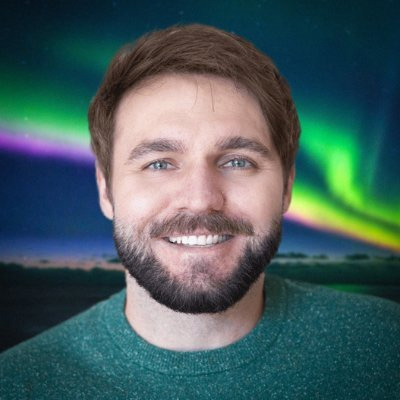
Tom Kerss F.R.A.S. is a London-based astronomer, astrophotographer, author and consultant. Having previously worked at the Royal Observatory in Greenwich, he is the founder of Stargazing✦London, which delivers world-class online astronomy and space courses with subject experts. Tom is also the host of the Star Signs podcast, providing updates from the world of space news, as well as what to look out for in the night sky.
Best telescopes for deep space: Frequently Asked Questions
What is the best telescope for deep space observation?
The Celestron NexStar 8SE is the best telescope for deep space observation due to its huge 8-inch aperture which drinks in dim starlight, its 2032mm focal length in a small, compact Schmidt-Cassegrain catadioptric design and the fact it lends itself well to eyepiece and telescope accessory upgrades.
What's the best deep space telescope on a budget?
The Sky-Watcher Skyliner-200P Classic offers fantastic value for money and due to its Dobsonian design, it's straightforward to use. Great, sharp optics combined with a detailed 2-inch eyepiece will give immersive deep-space views, though it's pretty hefty at 52 lbs (23.6kg) so only serious skywatchers will want to travel with it.
What's the best telescope to photograph deep space?
For speed and simplicity, the Unistellar eVscope 2 is undoubtedly the best deep space telescope for imaging. Set up with the smartphone app and the smart telescope automatically aligns itself within just a few moments.
What makes a telescope good for deep space observation?
The number one factor in determining the relative deep-sky performance of any two telescopes is the aperture of the objective. Larger apertures collect more light, allowing fainter objects to become visible in the field. In general, mirrors are less expensive than lenses, so reflecting-type telescopes offer more bang for your buck when it comes to deep-space views.
For astrophotography, highly corrected fast optics are more important, as well as sturdy and accurate mounts that can track the sky. Computerized mounts are a must for imagers, and they also have advantages for visual observers. If you're new to the deep sky, consider a telescope that helps you find these faint objects that don't pop out as readily as the planets or bright stars. It could be a push-to system, which tells you how hot or cold you are, or a fully-fledged go-to system that steers itself to your preferred target. Here are some of the best telescopes for deep space exploration and photography.
You can experience deep space on a budget, or invest in a no-compromise giant home observatory. Be sure to consider models which prioritize aperture and light grasp, as this will be essential for picking out the faintest targets, and if you intend to enter the world of astrophotography, choose something that's going to be suitable from the beginning, even if you don't have the equipment you need yet.
A sturdy equatorial mount with built-in go-to and tracking will unlock the longest exposures, allowing you to maximize the potential of your optical tube assembly. These larger, mirror-type telescopes usually require more maintenance than their smaller, more robust lens-type counterparts, but there's nothing you can't do yourself without some practice and understanding. At times it can seem unforgiving compared to the simplicity of looking at the moon, but the deep sky is worth the investment. Have fun exploring the wonders of the Universe!
Update log
Recent updates
Editor's note: Updated 4/2/25 to add in Sky-Watcher Quattro 150P, replacing the out of production Orion 6-inch f/4 Newtonian Astrograph. We also added in information about April's cosmic events and a comparison table.
How we tested the best telescopes for deep space
At Space.com, we take our telescope reviews seriously. To guarantee that you get the most honest and up-to-date recommendations on the best telescopes for deep space, we subject each instrument to a thorough and rigorous review process. Our expert staff and knowledgeable freelance contributors conduct these reviews and consider various aspects, such as construction, design, optical performance and field performance. This ensures that our reviews are fair and backed up with real-life experience.
We take into account factors such as price, intended use, and class during our reviews. For instance, while a 10-inch Dobsonian and a 2.76-inch refractor may be the best picks in their respective classes, comparing them would be inappropriate.
We evaluate the ease of setup, reliability, and noise level of computerized or motorized mounts, as well as whether a telescope comes with appropriate eyepieces and tripods. We even suggest additional equipment if it would enhance your experience. At Space.com, we are committed to providing reliable and transparent buying guides and reviews. With complete editorial independence, you can trust us to provide you with the best buying advice on telescopes and whether you should purchase a particular instrument or not.
Join our Space Forums to keep talking space on the latest missions, night sky and more! And if you have a news tip, correction or comment, let us know at: community@space.com.
Get the Space.com Newsletter
Breaking space news, the latest updates on rocket launches, skywatching events and more!

Tom Kerss is an astronomer and the author of numerous best-selling books about the night sky for both adults and children, including Northern Lights, Diamonds Everywhere and the Starry Stories Series. He shares his passion for the stars with people all over the world, delivering courses, podcasts and media interviews. Having worked in Hawaii, Chile, Namibia, Iceland and Norway, Tom loves nothing more than to seek out the darkest and most beautiful skies on Earth, escaping his light-polluted home of London. He has a background in astrophysics and formerly worked at the Royal Observatory in Greenwich.
- Brandon SpecktorLiveScience senior writer
- Chris McMullenContributing Writer
- Tantse WalterContributing Writer










